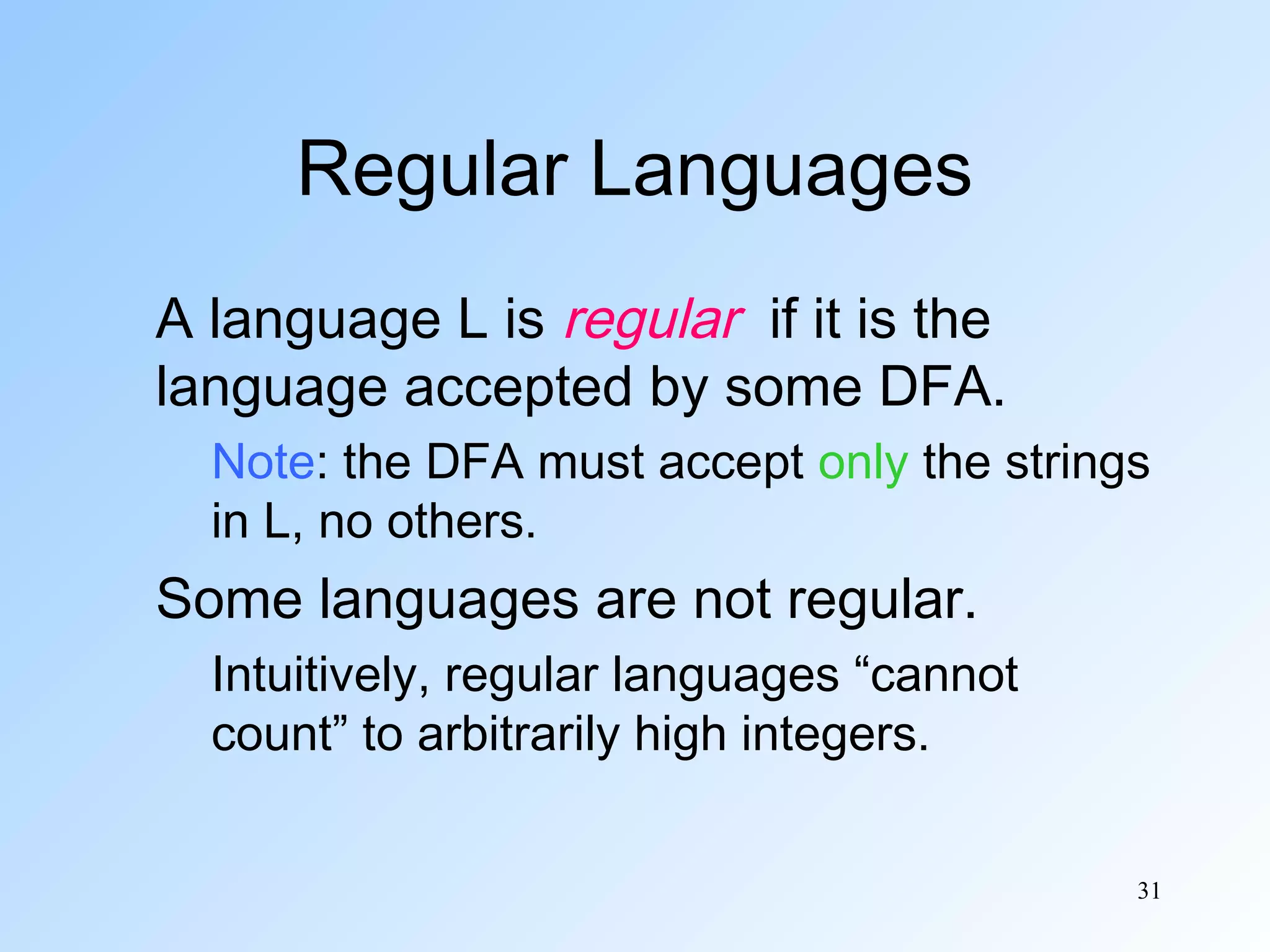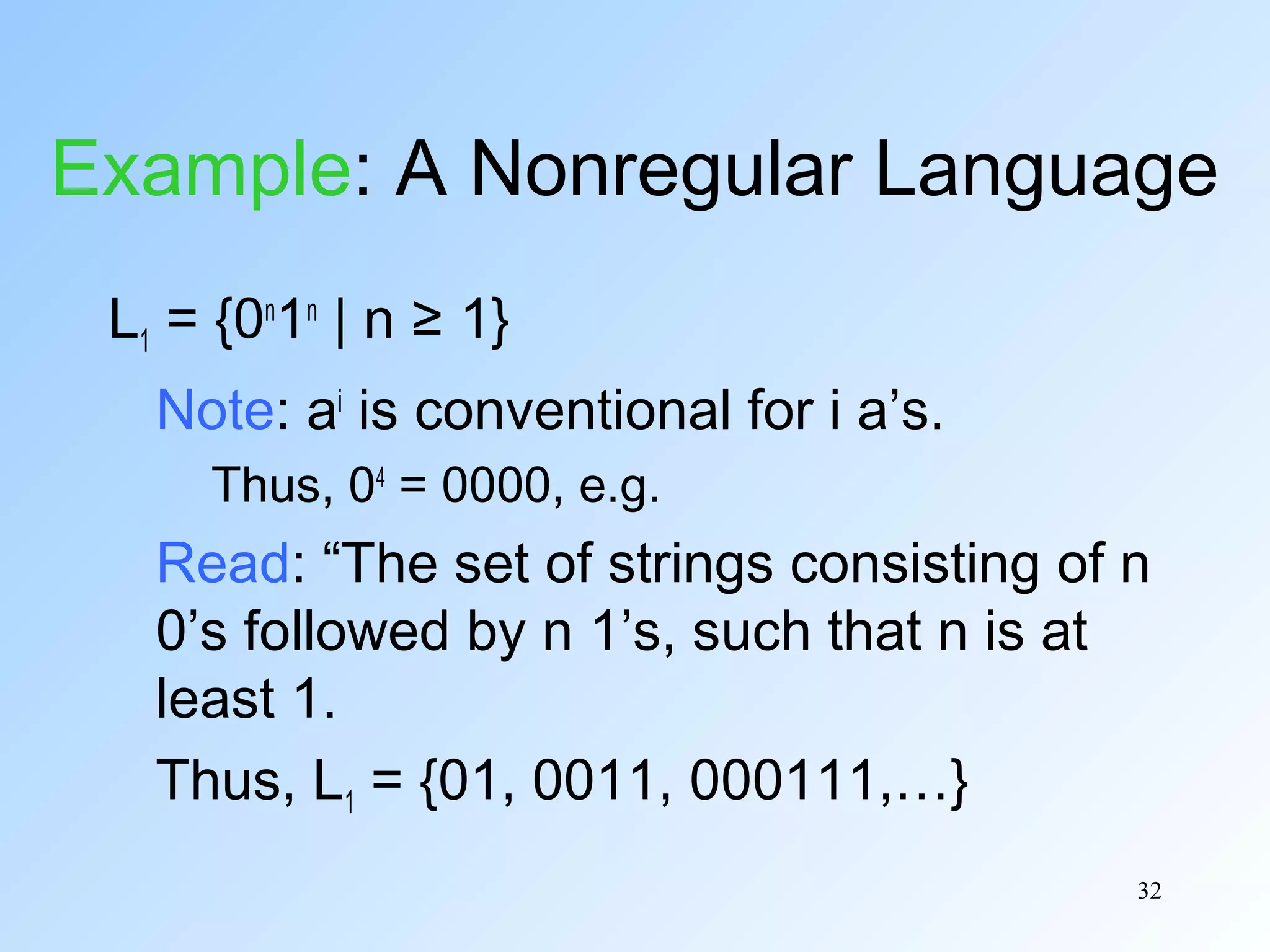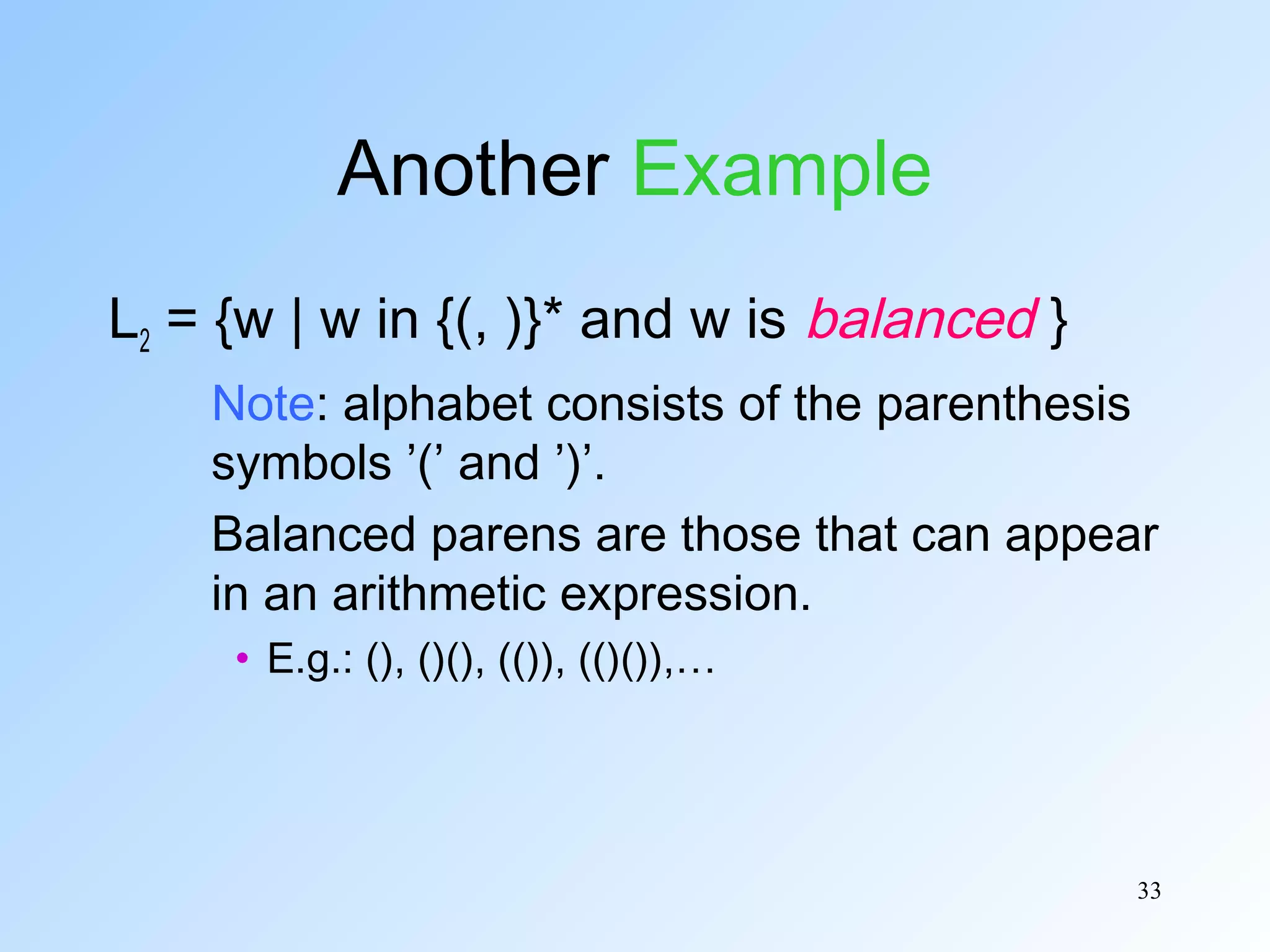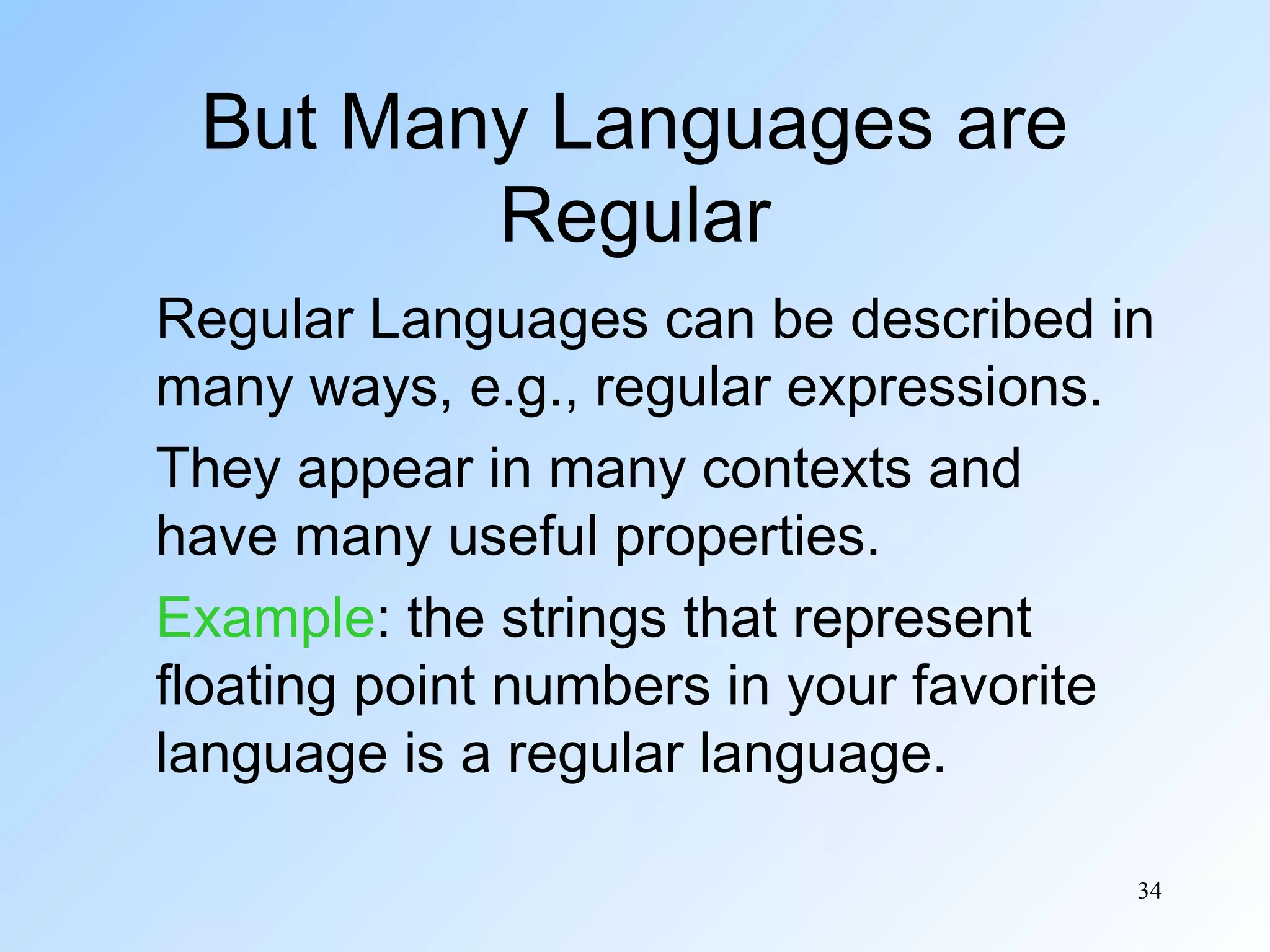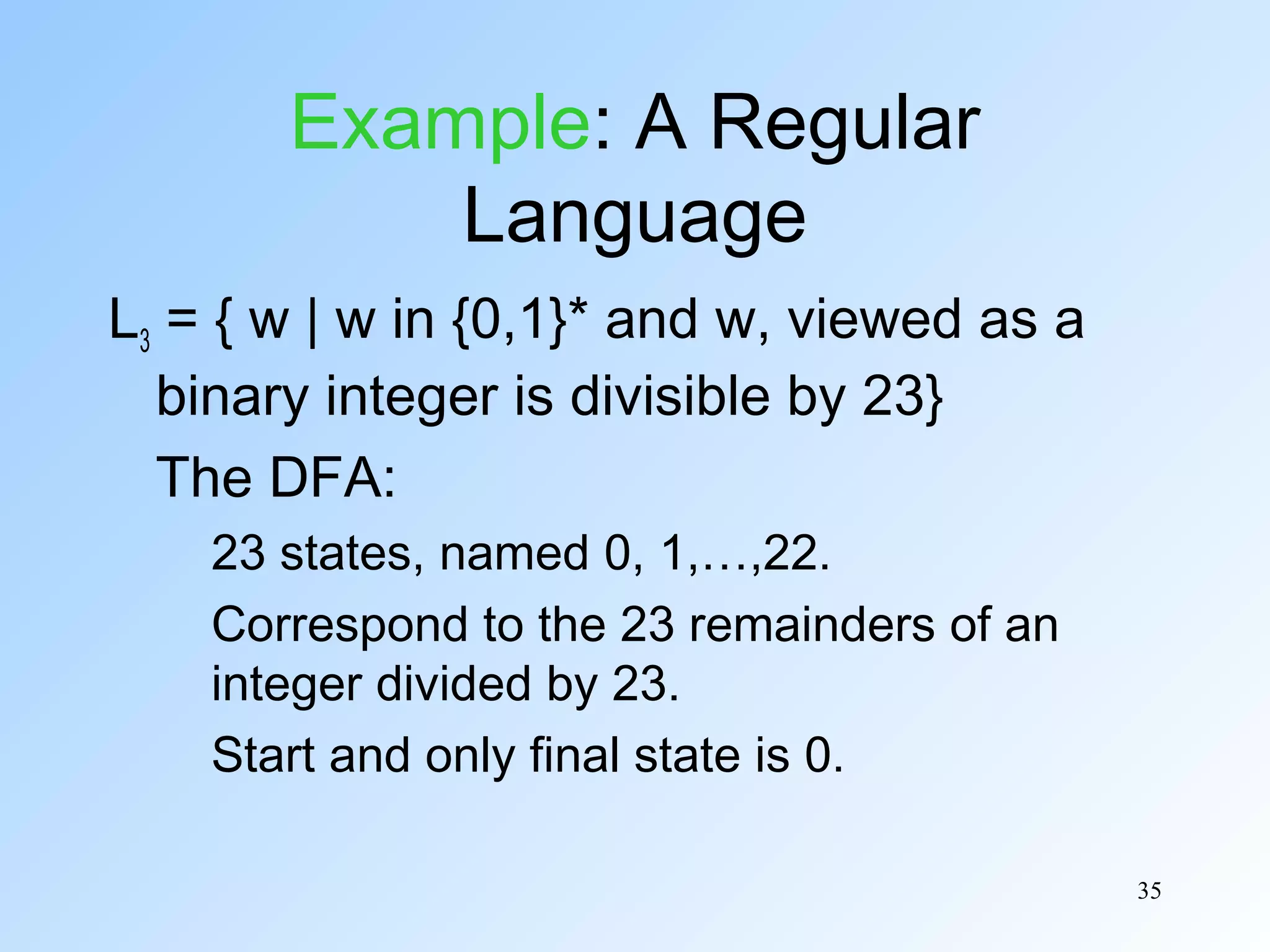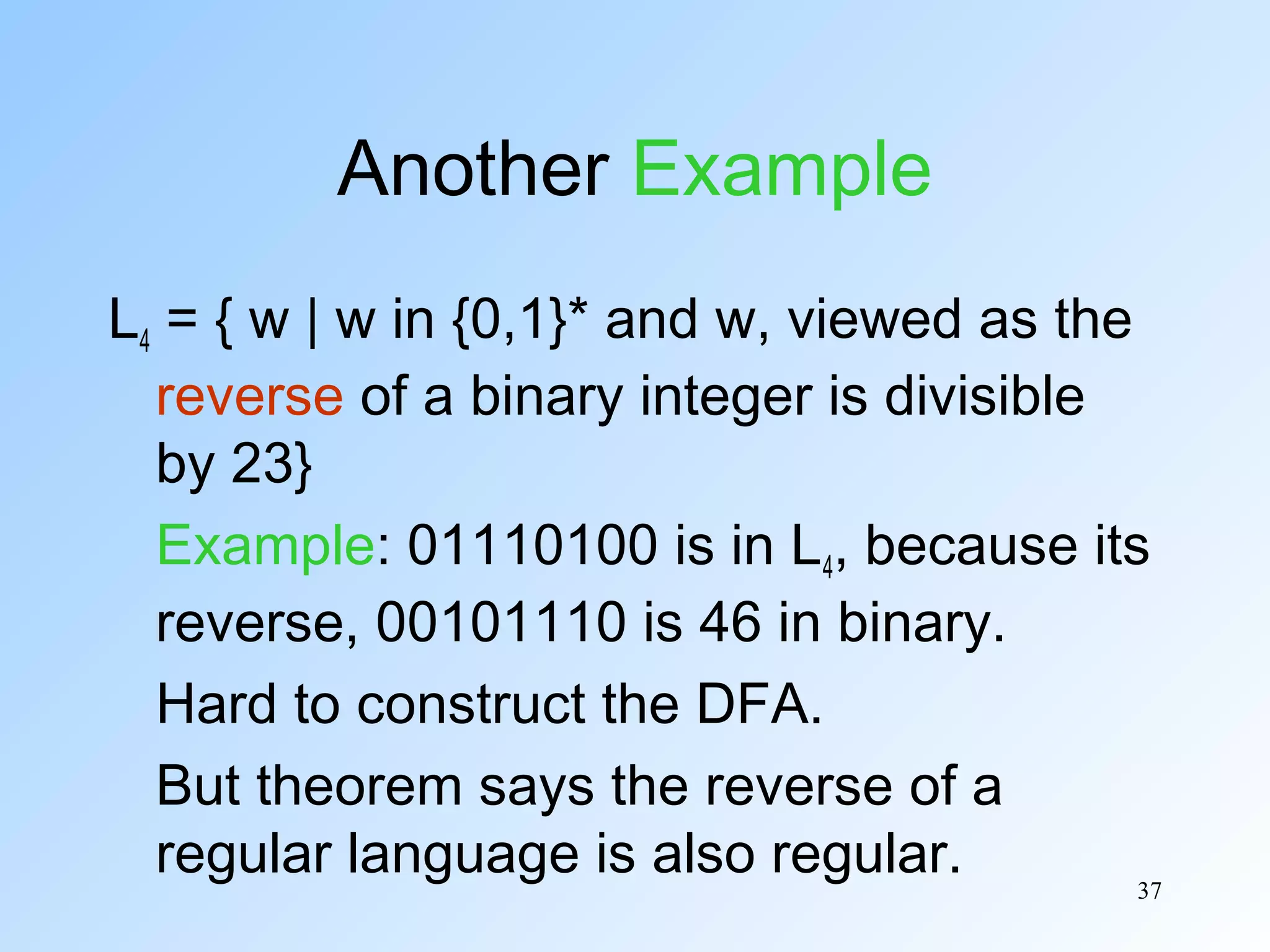This document provides an introduction to finite automata and regular languages. It defines key concepts such as alphabets, strings, languages, deterministic finite automata (DFAs), and the transition function. DFAs are represented using graphs or transition tables. The extended transition function describes the state reached based on an input string. The language of a DFA is the set of strings that reach a final state. Proofs are used to show two language descriptions are equivalent. Regular languages can be recognized by DFAs and have certain properties, while some languages are non-regular. Examples demonstrate regular and non-regular languages.
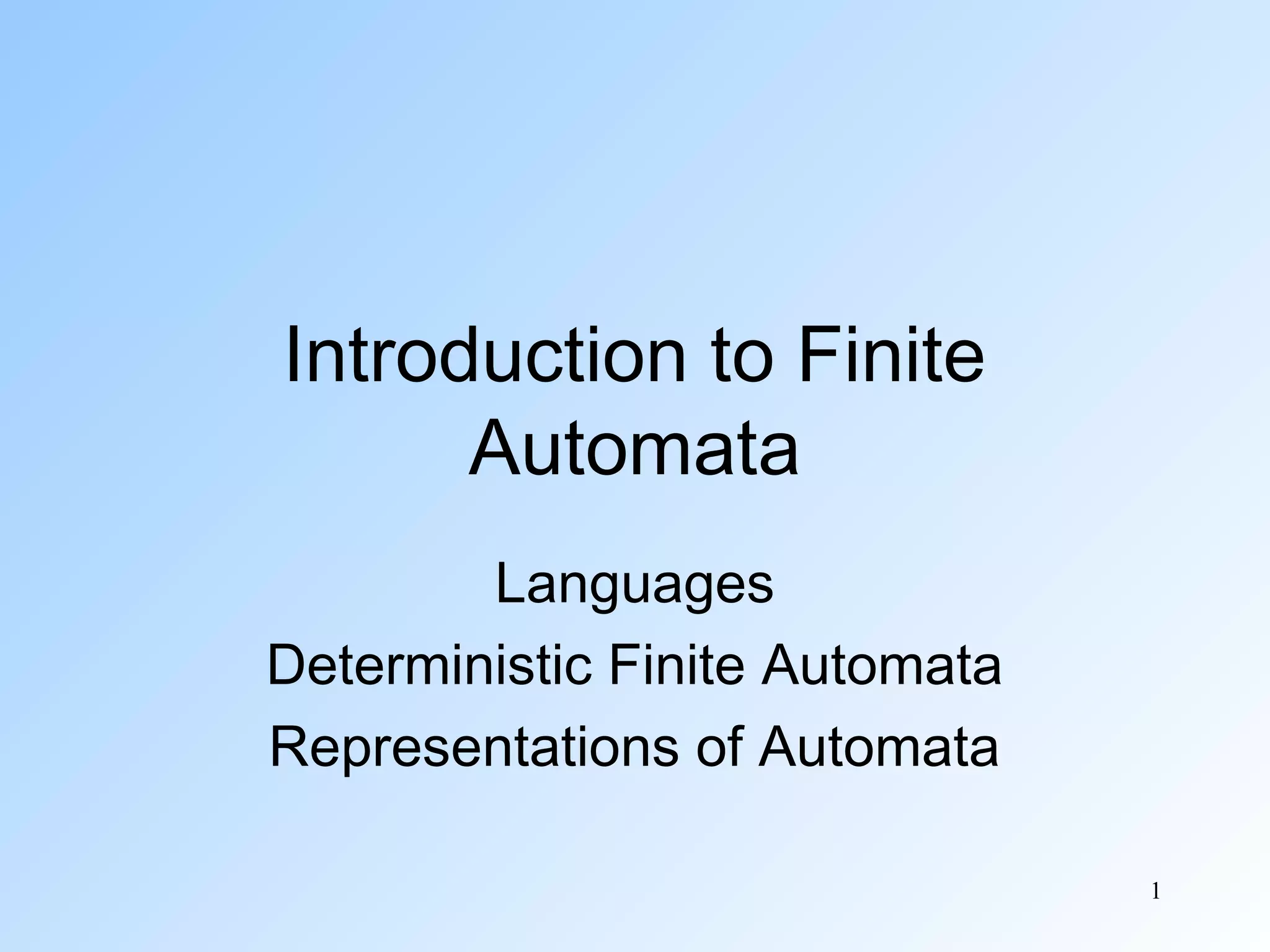
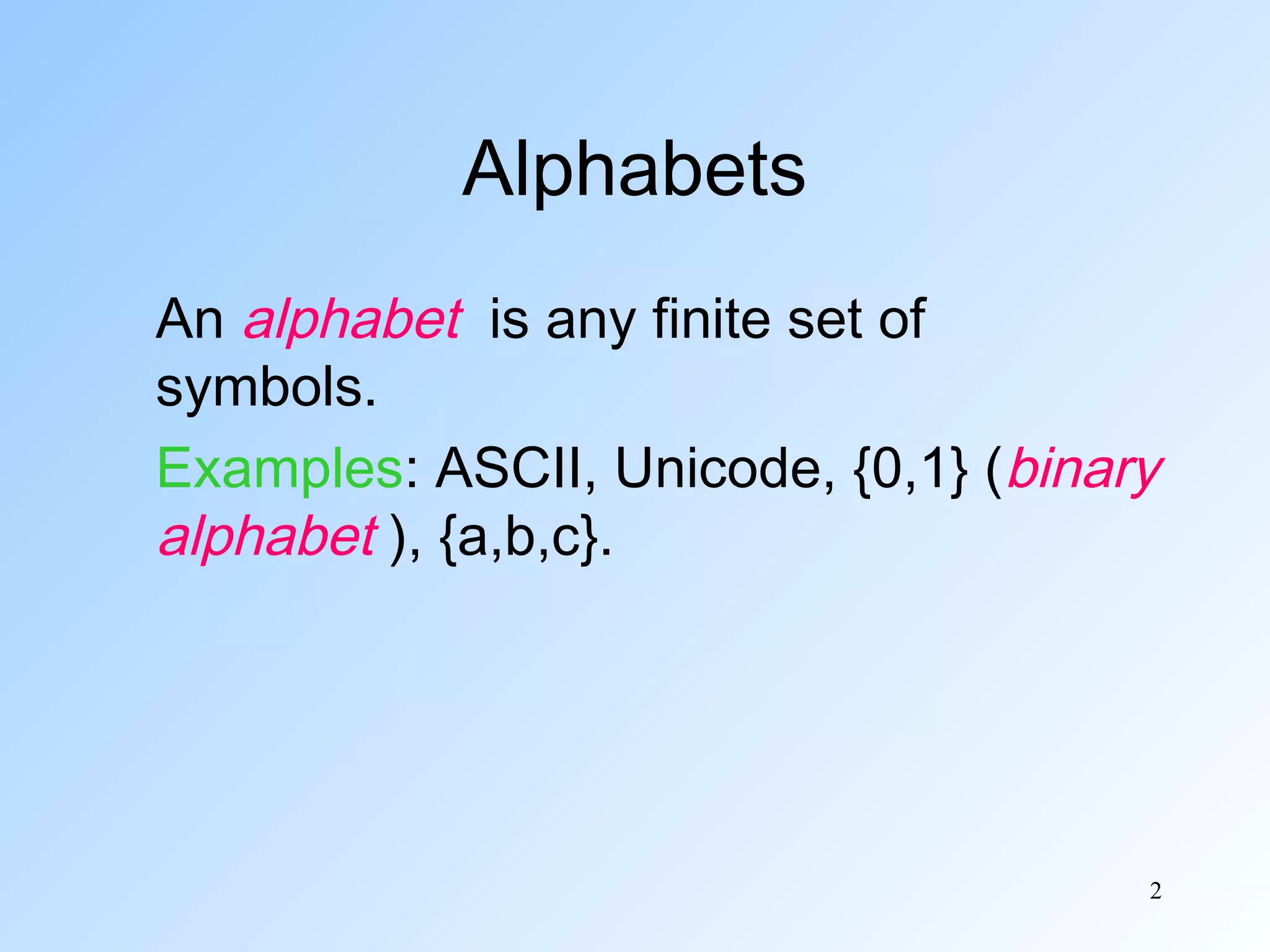

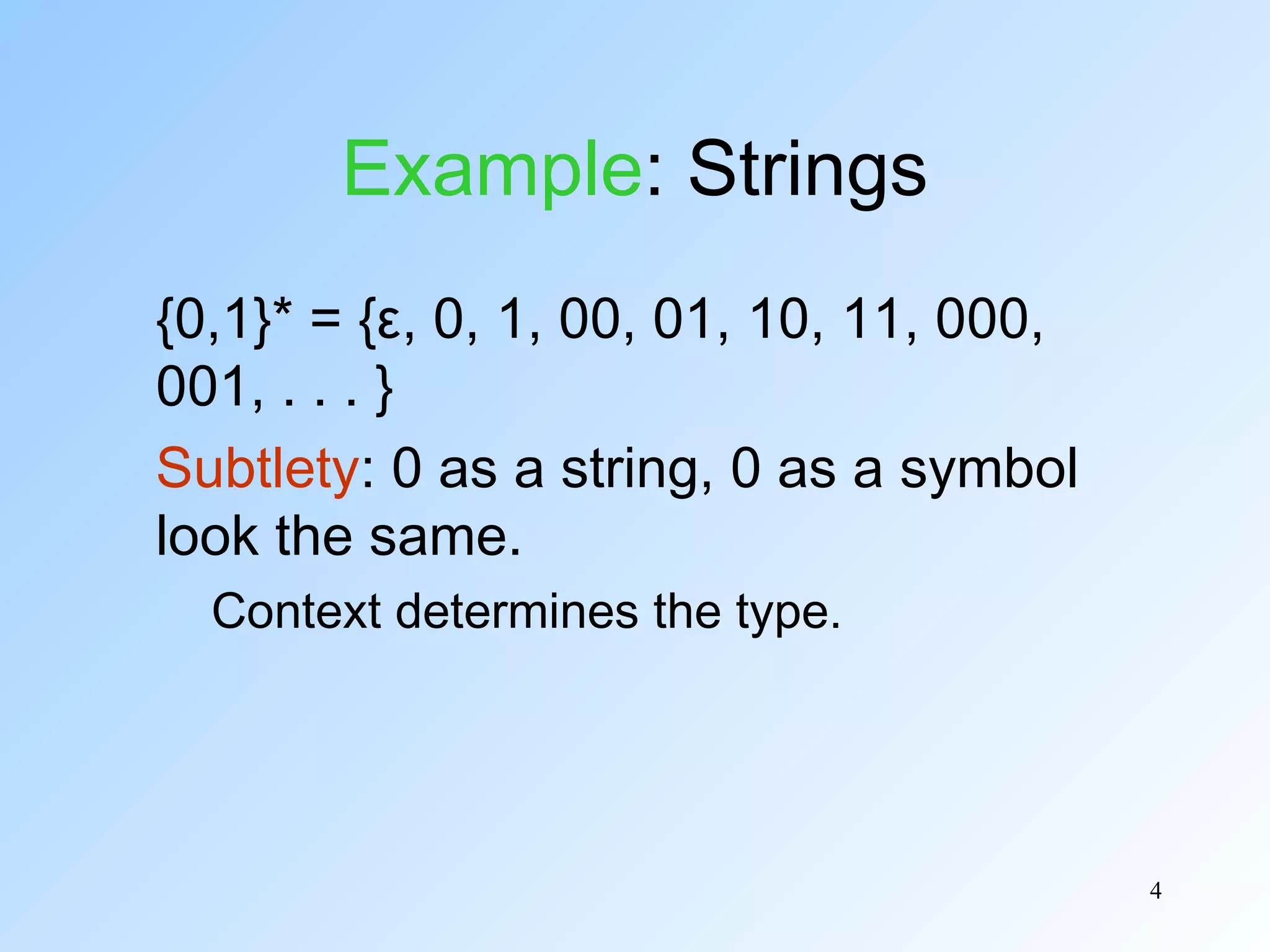
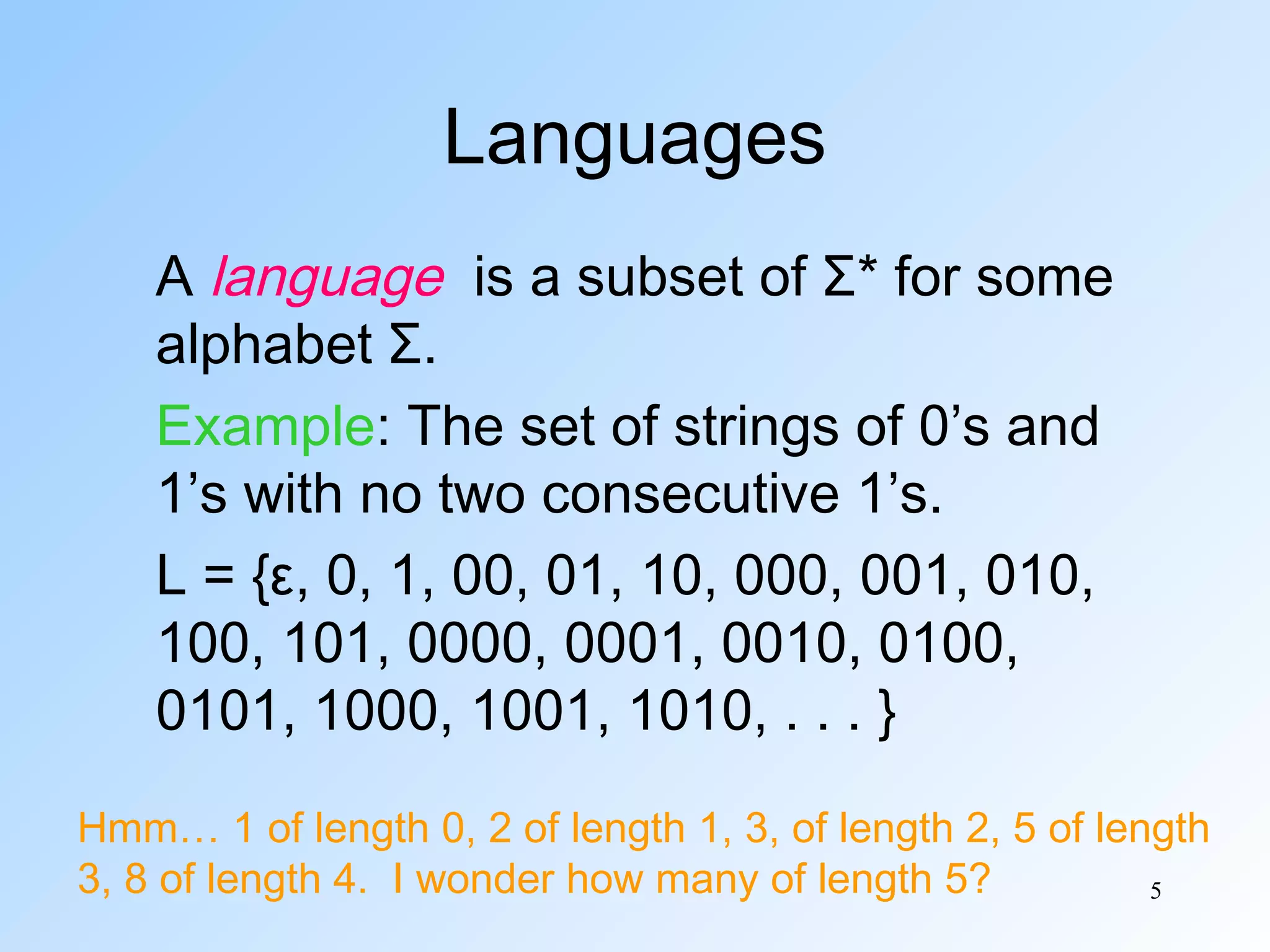
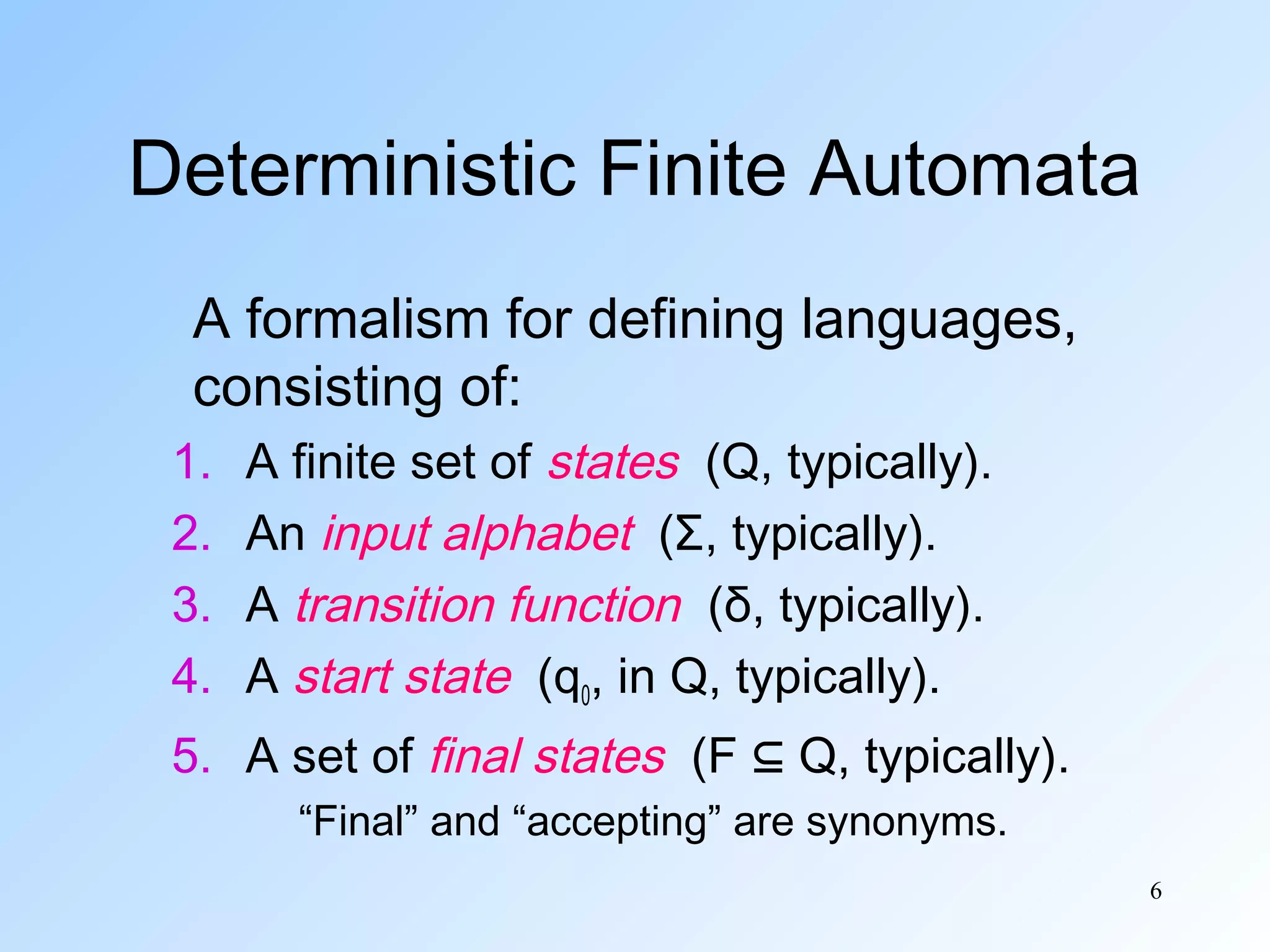
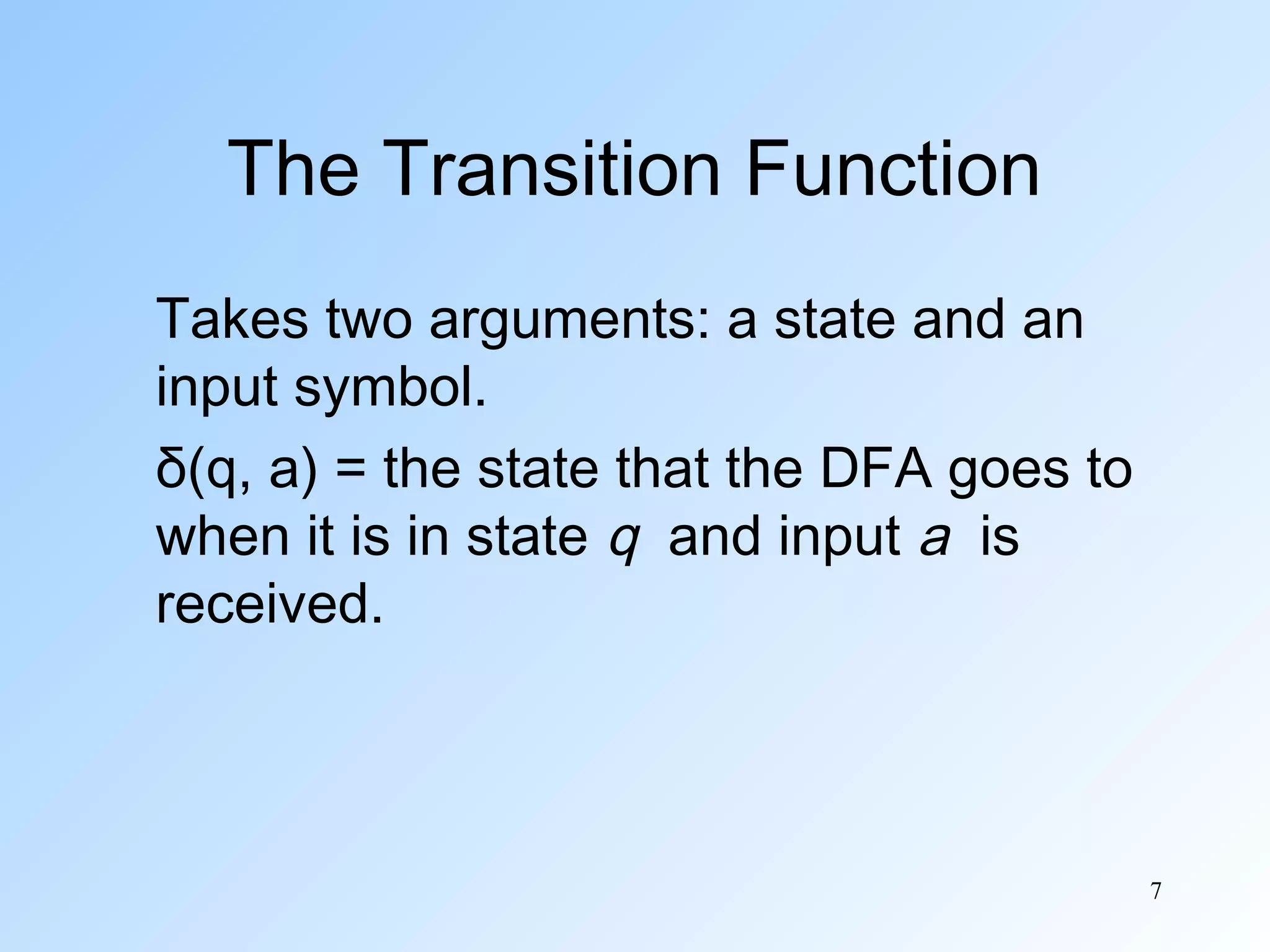
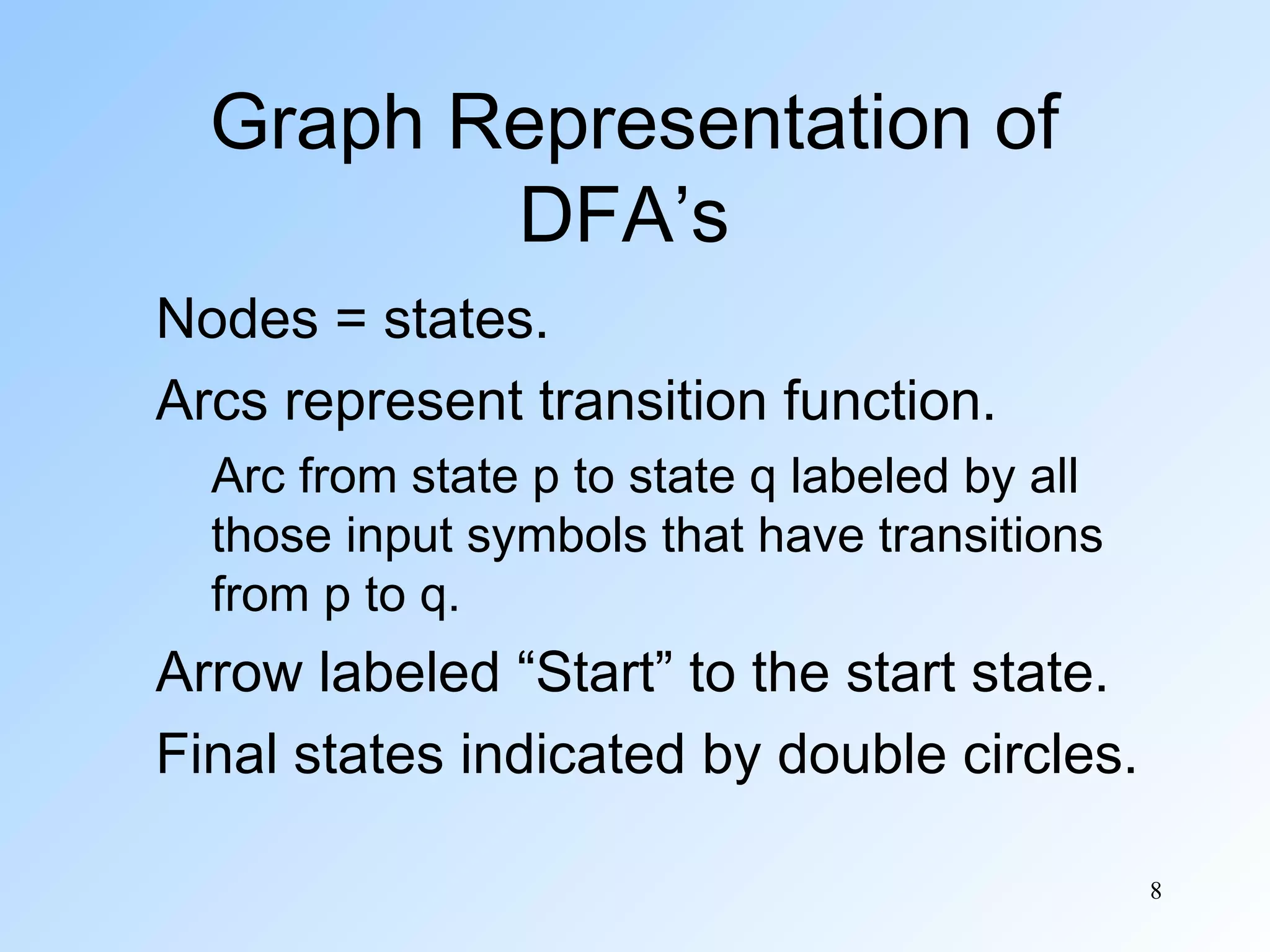
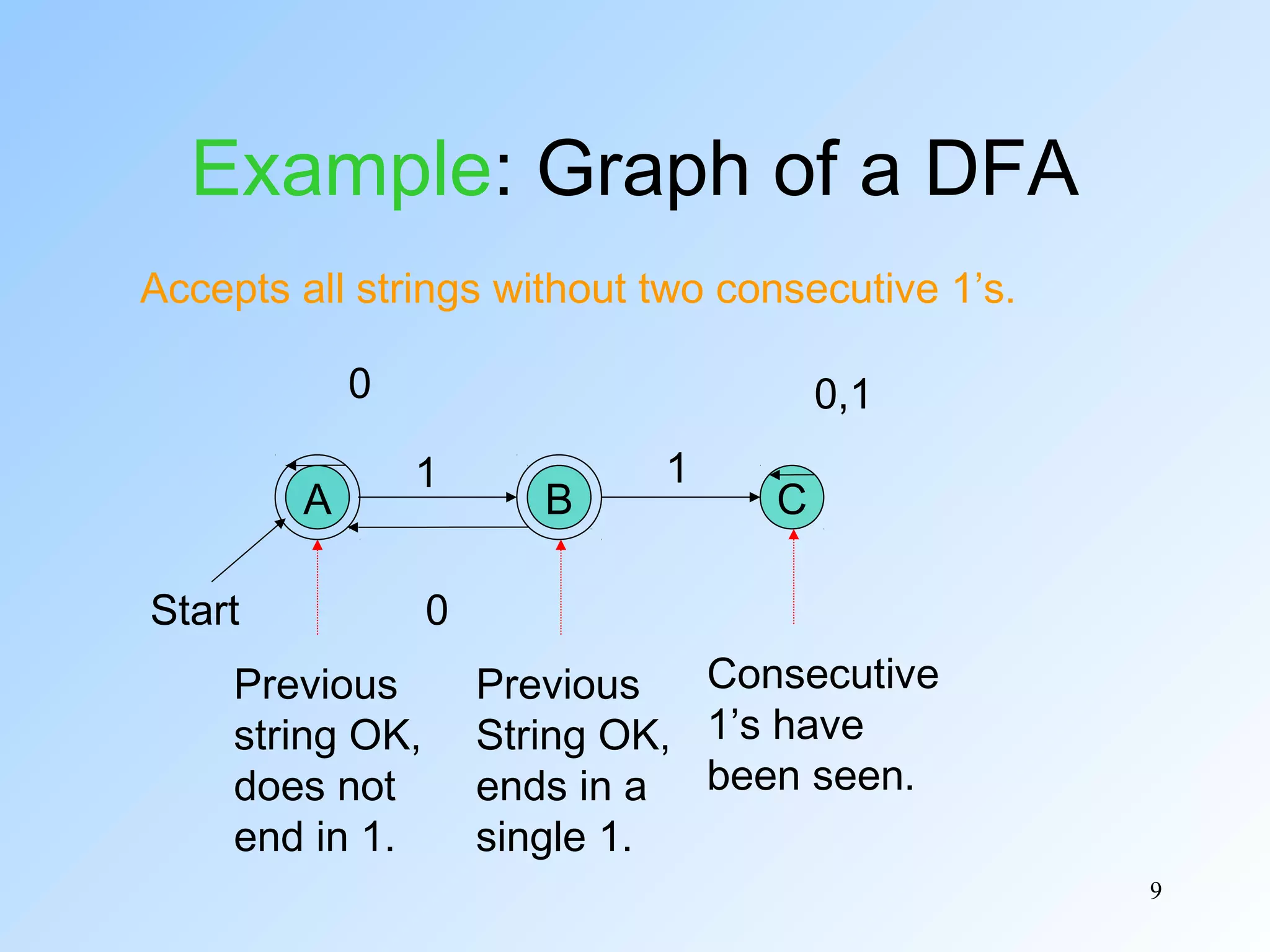



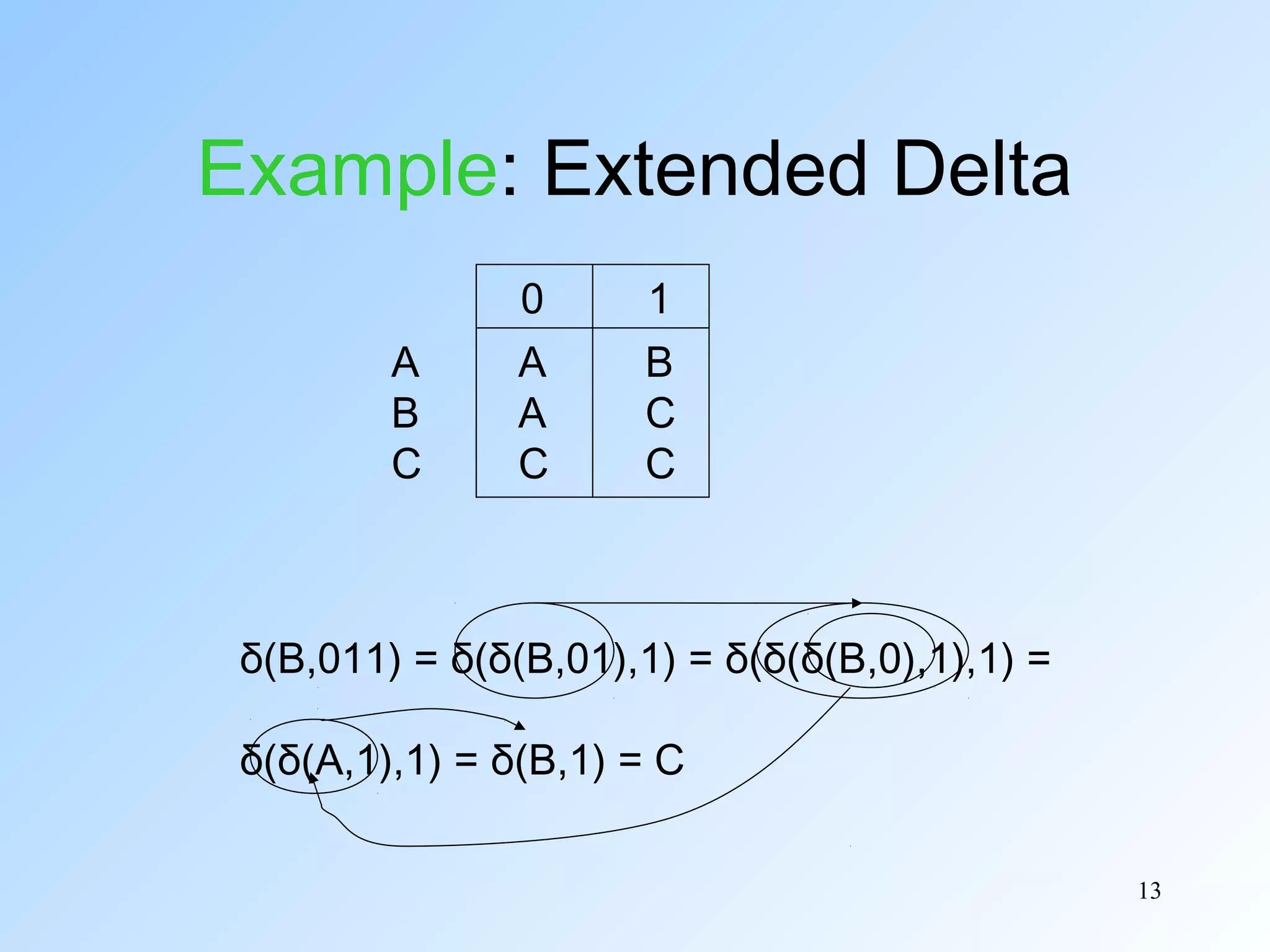
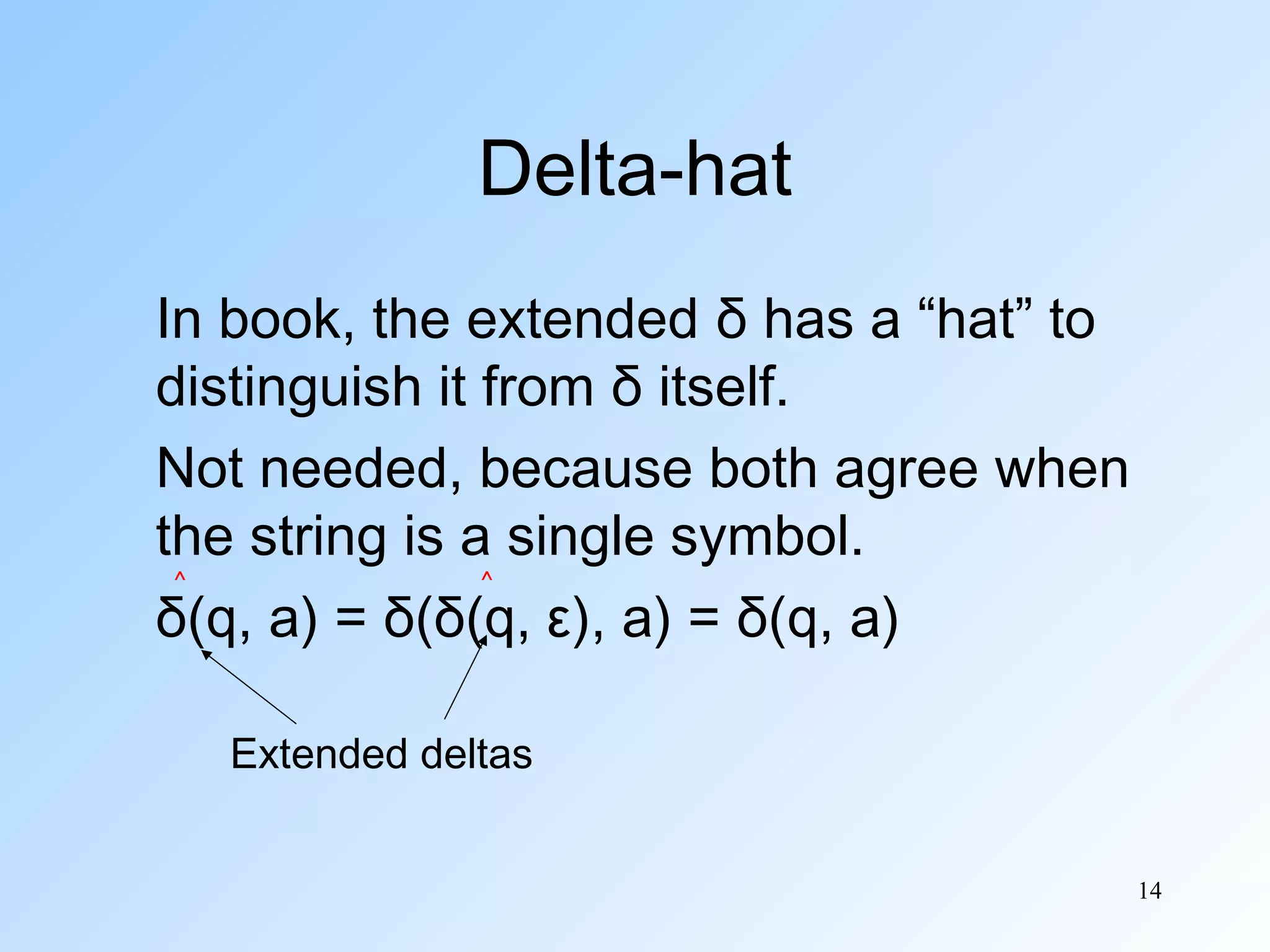
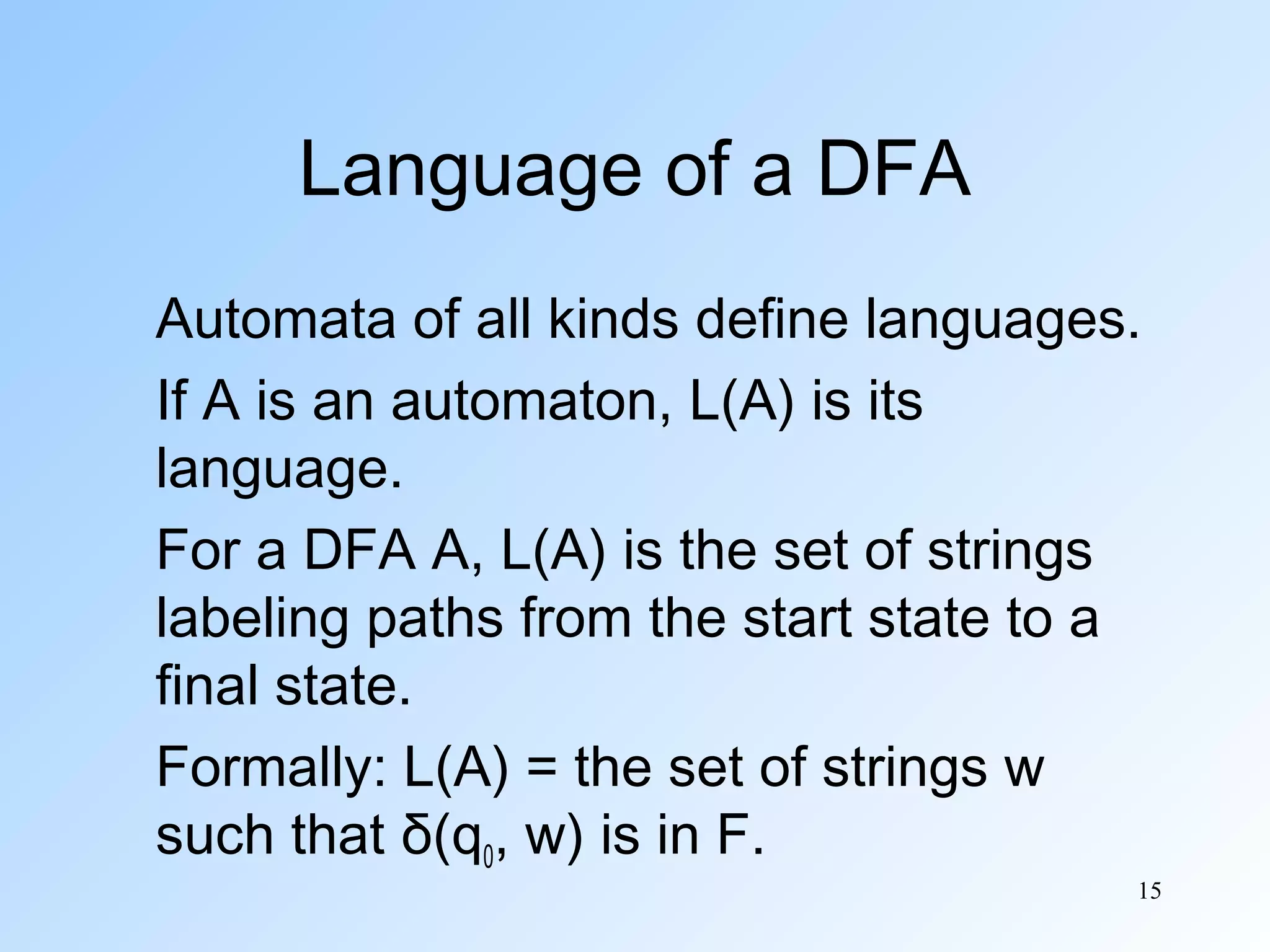
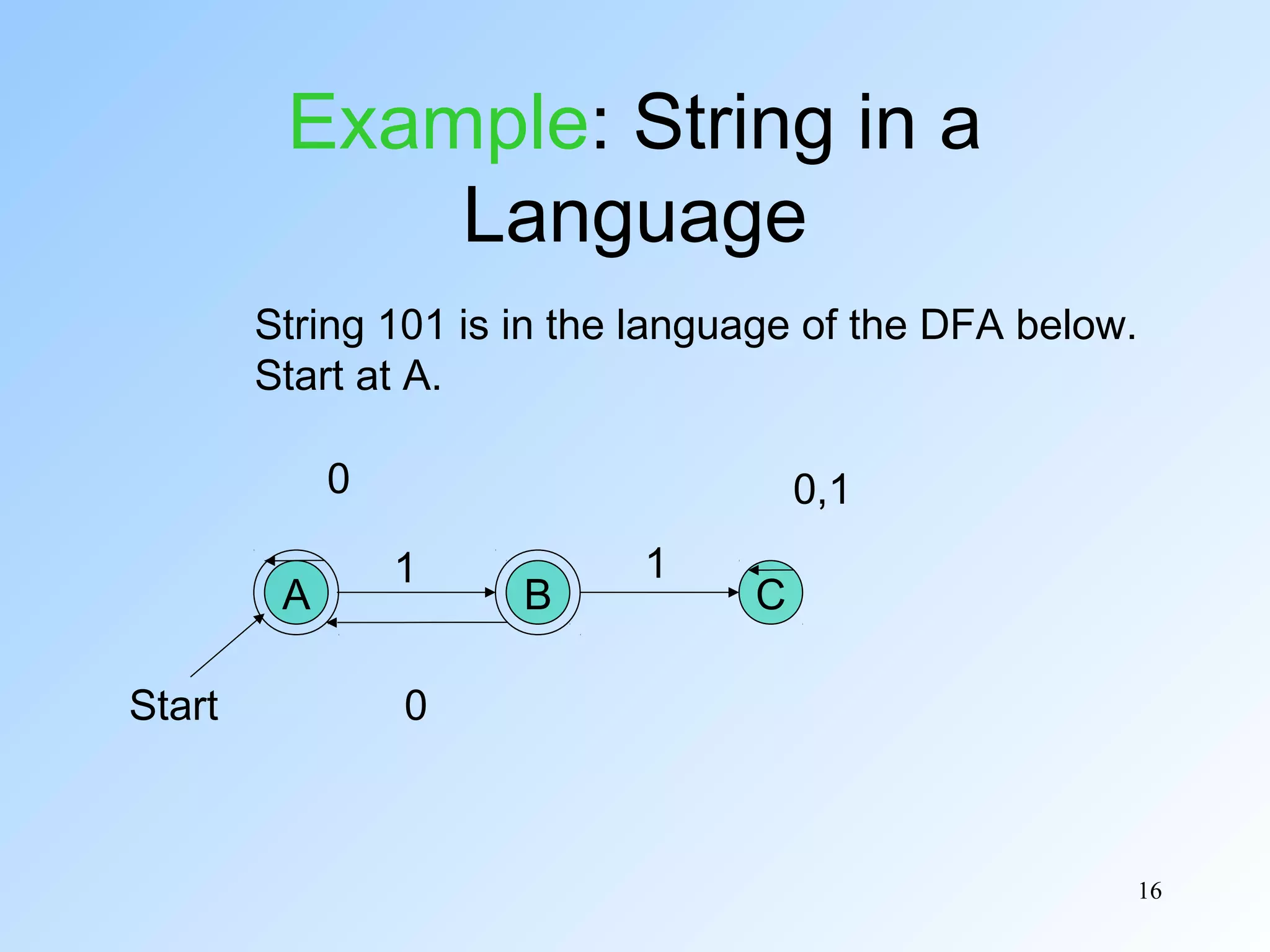

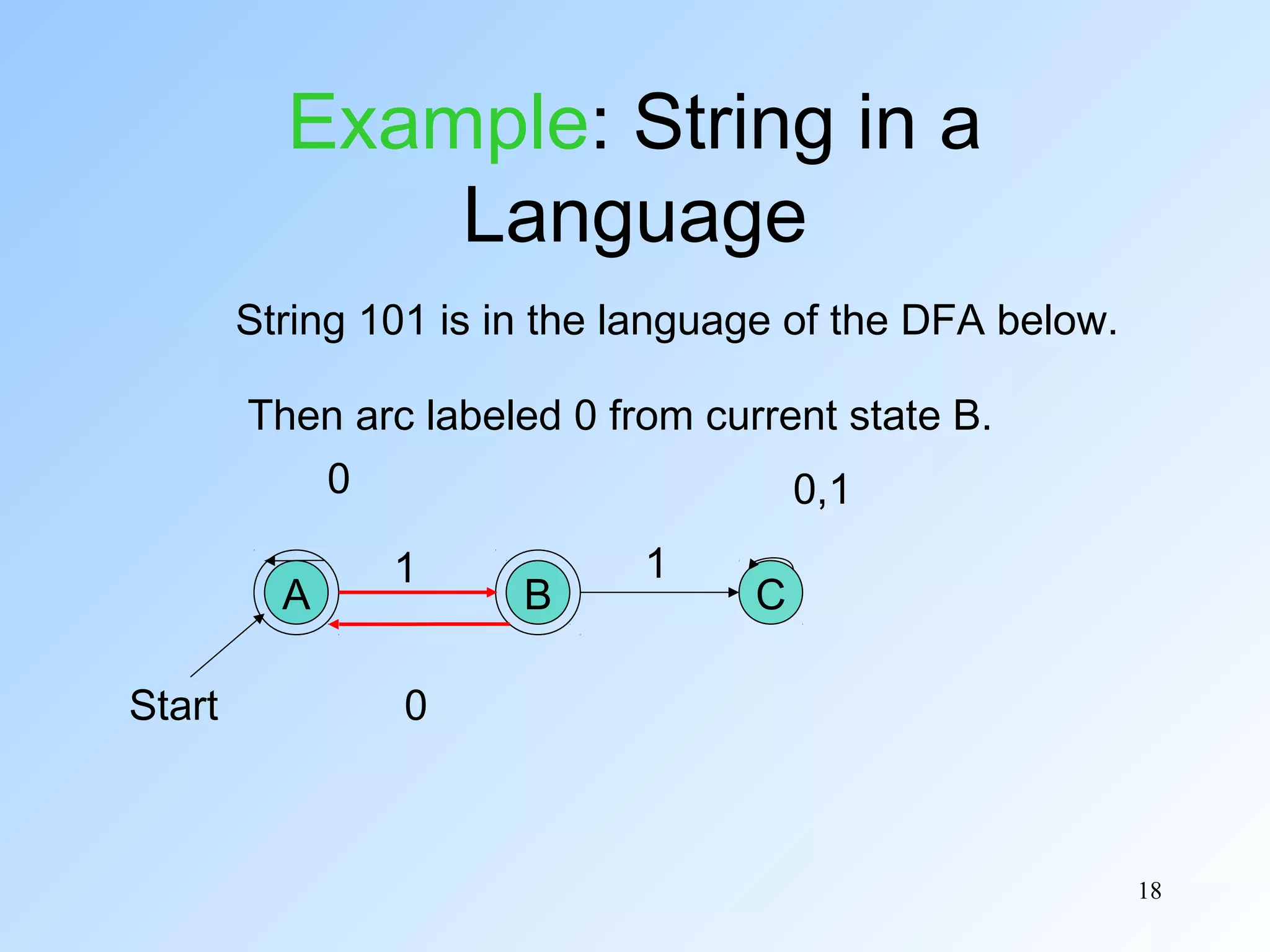
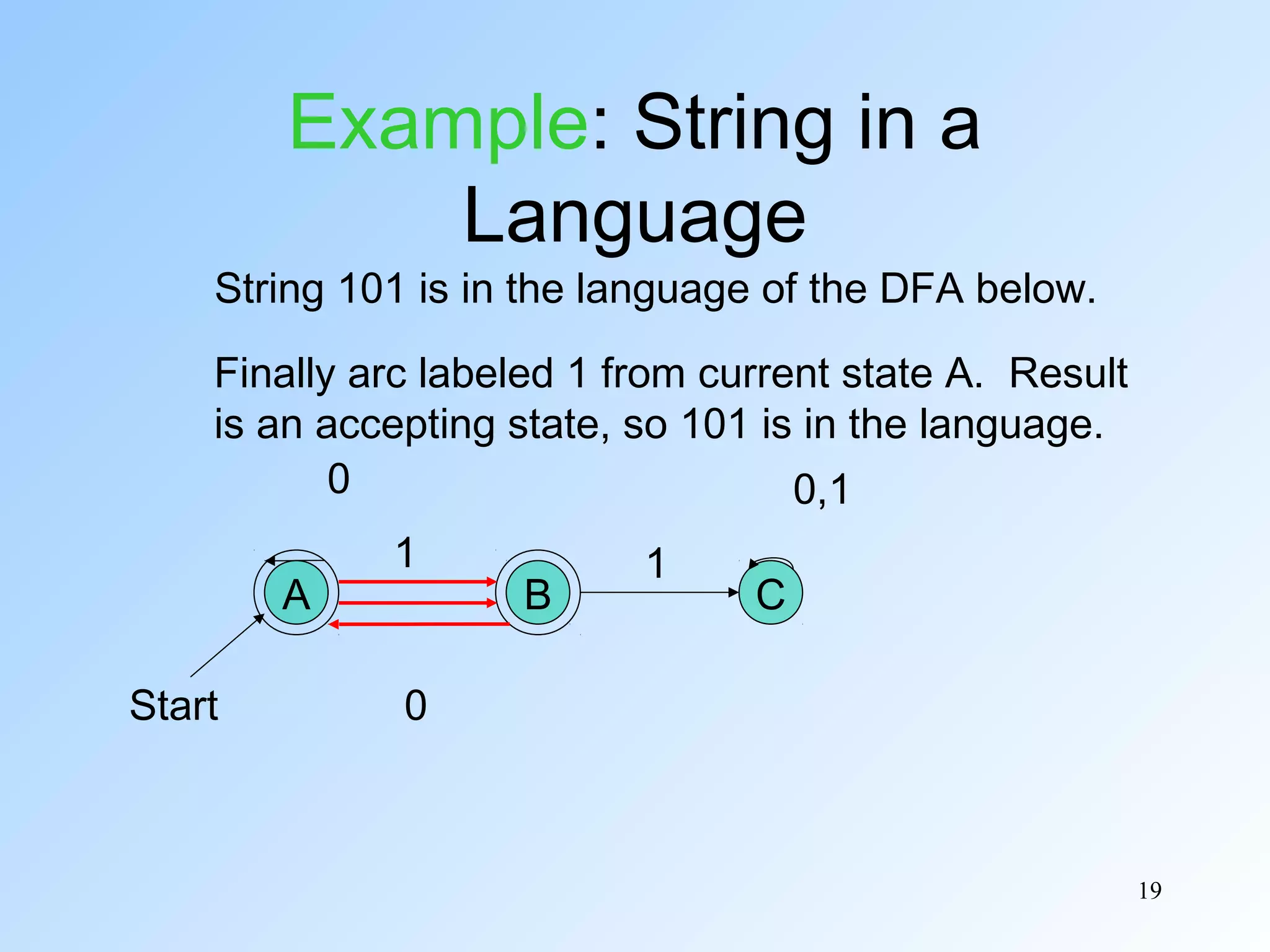
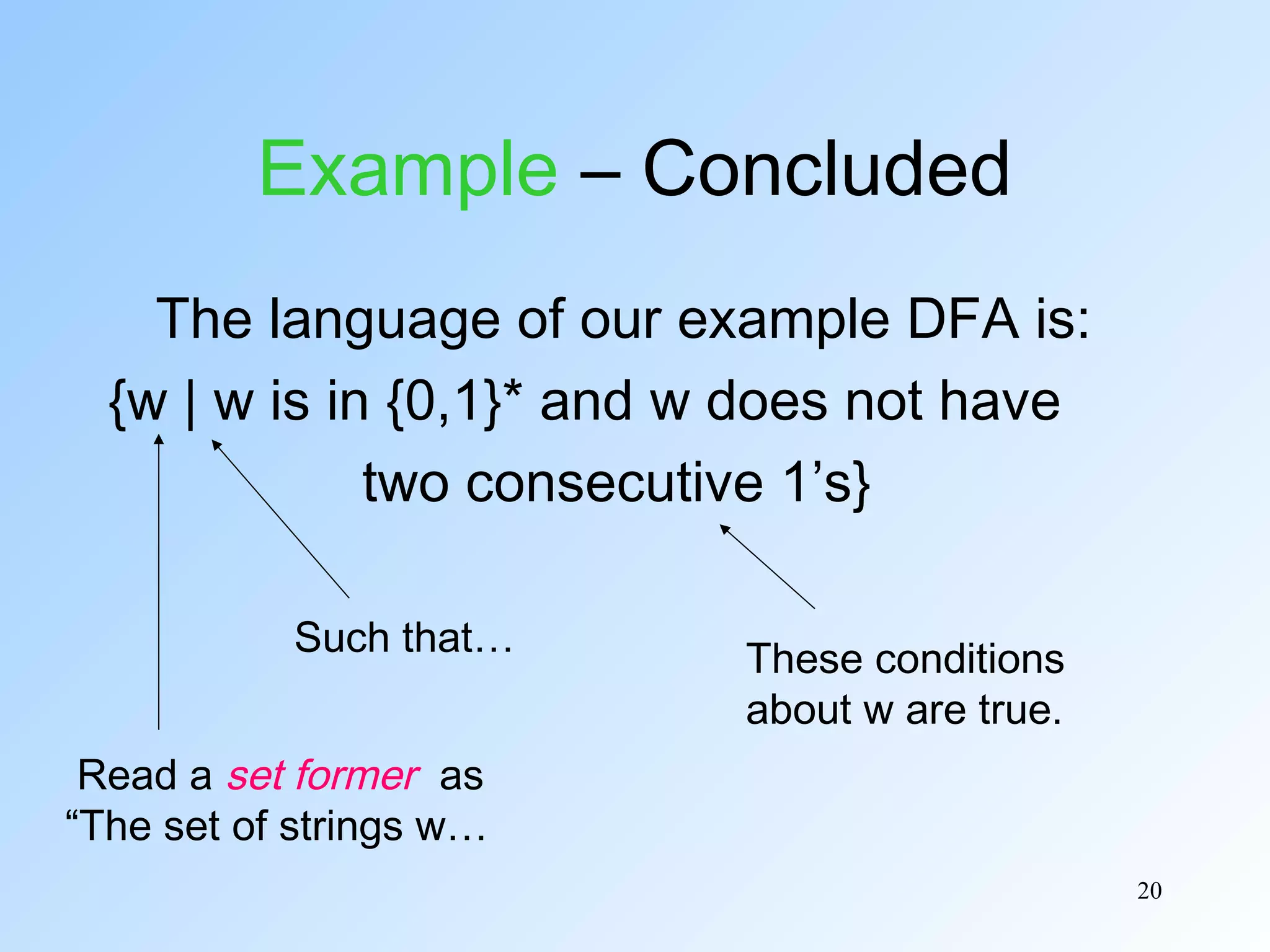
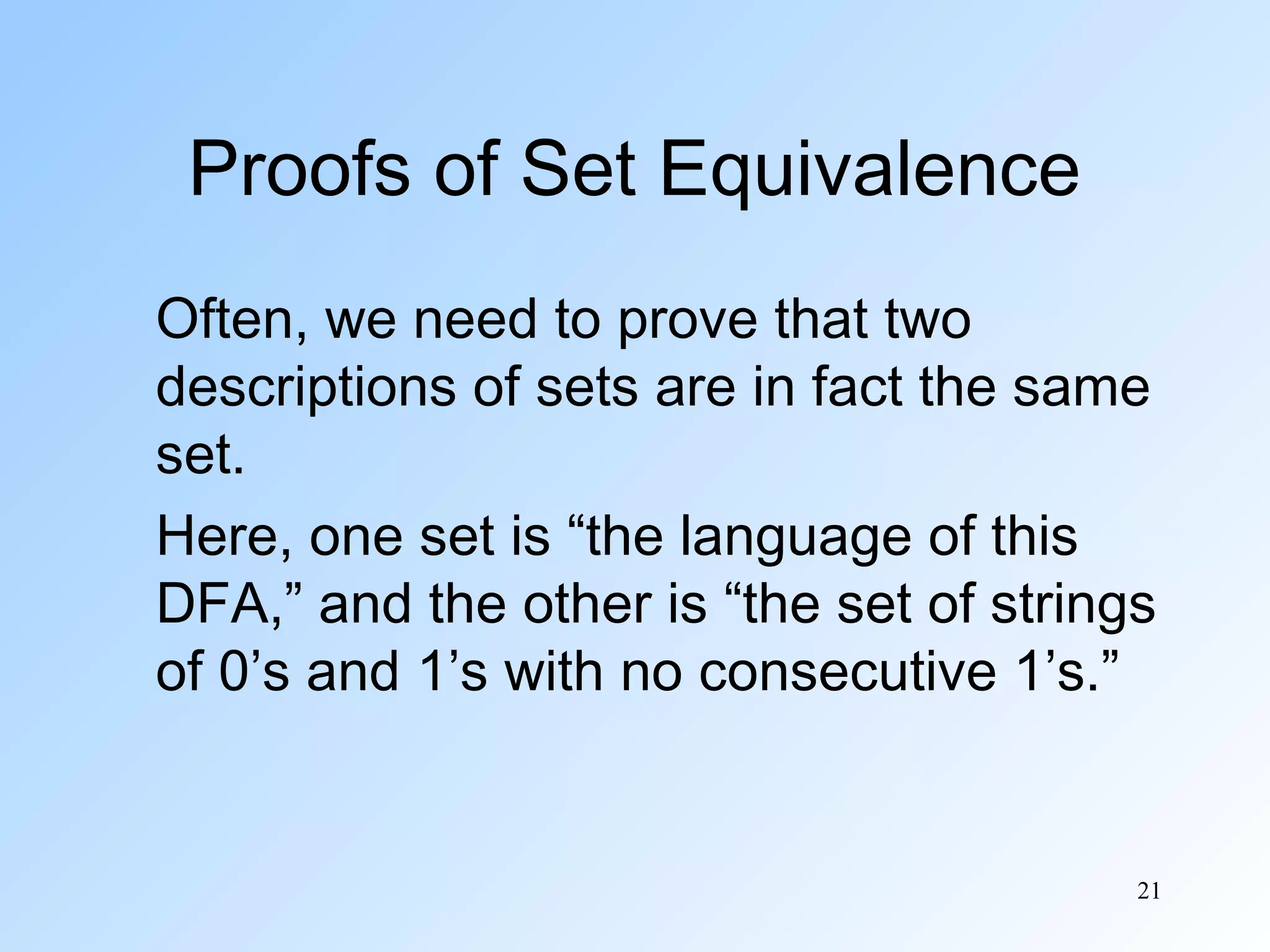
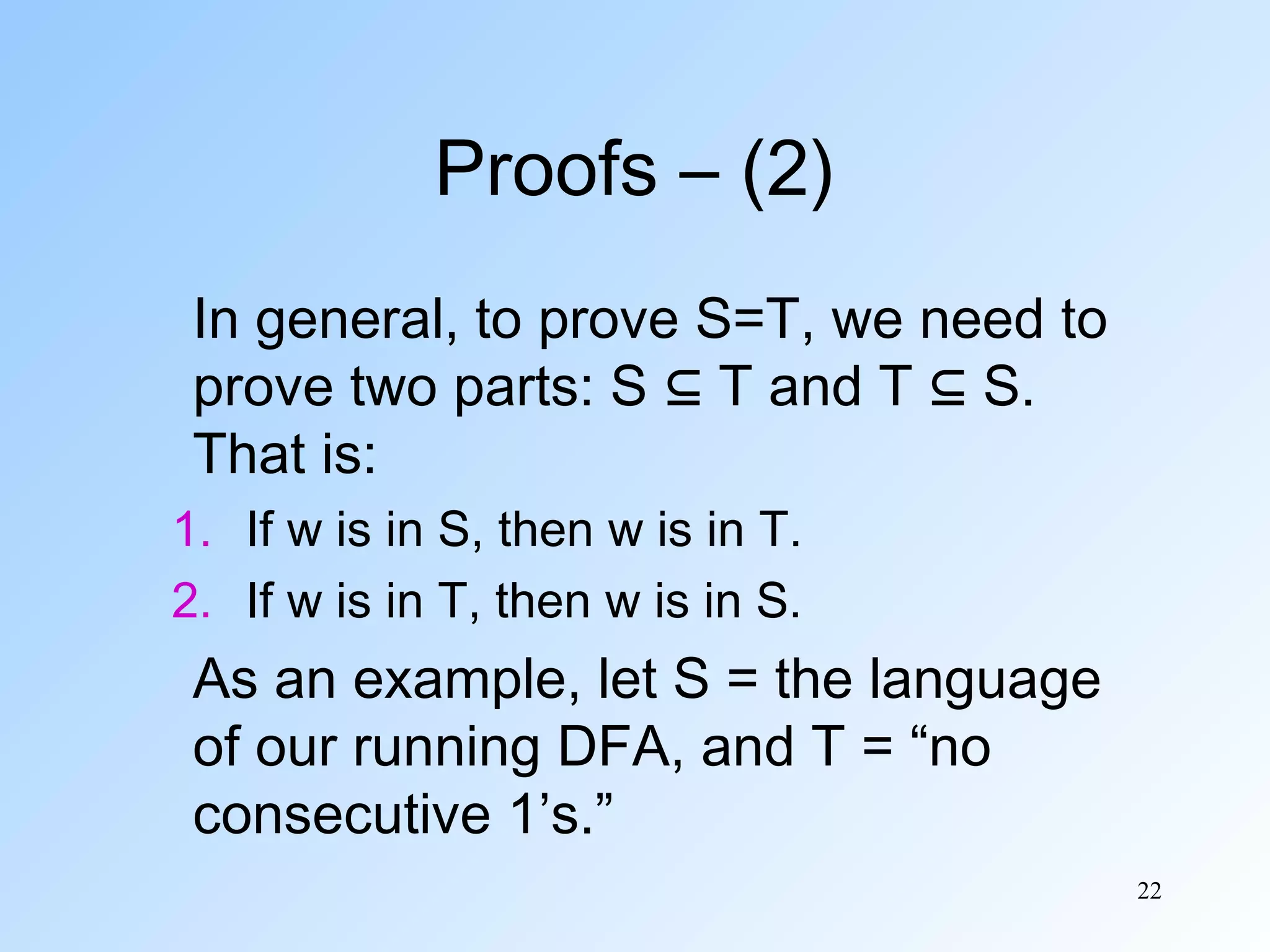
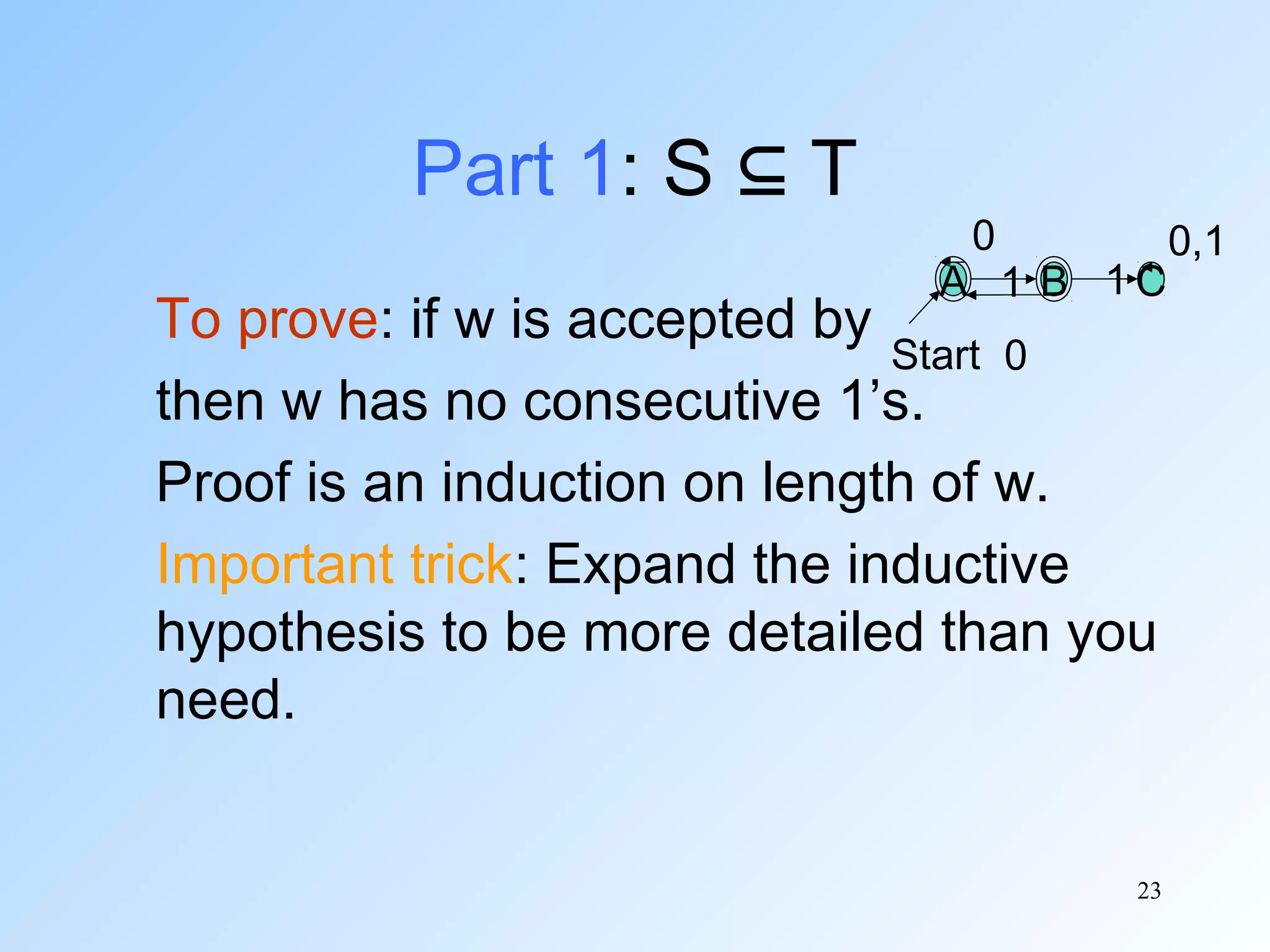
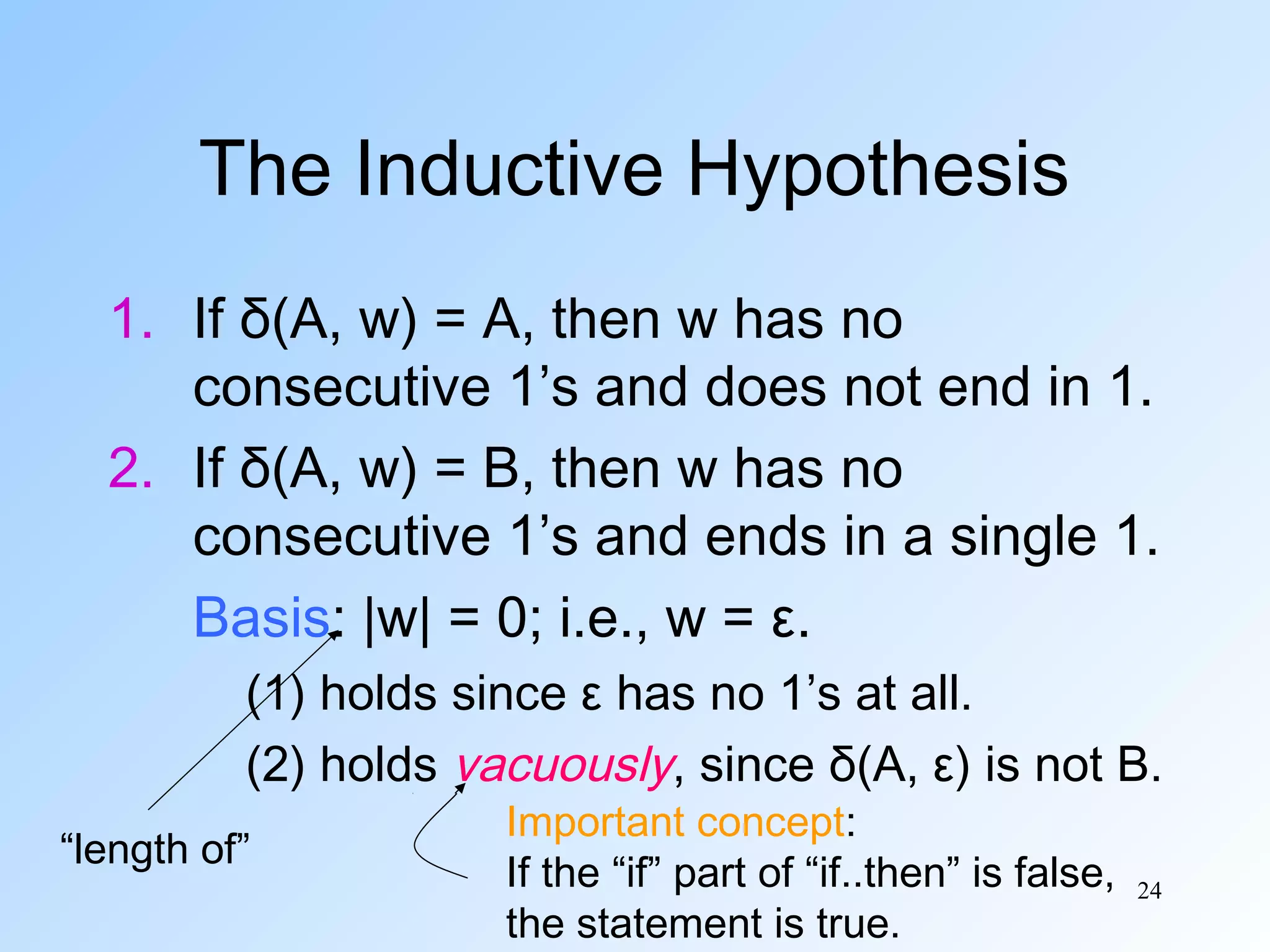
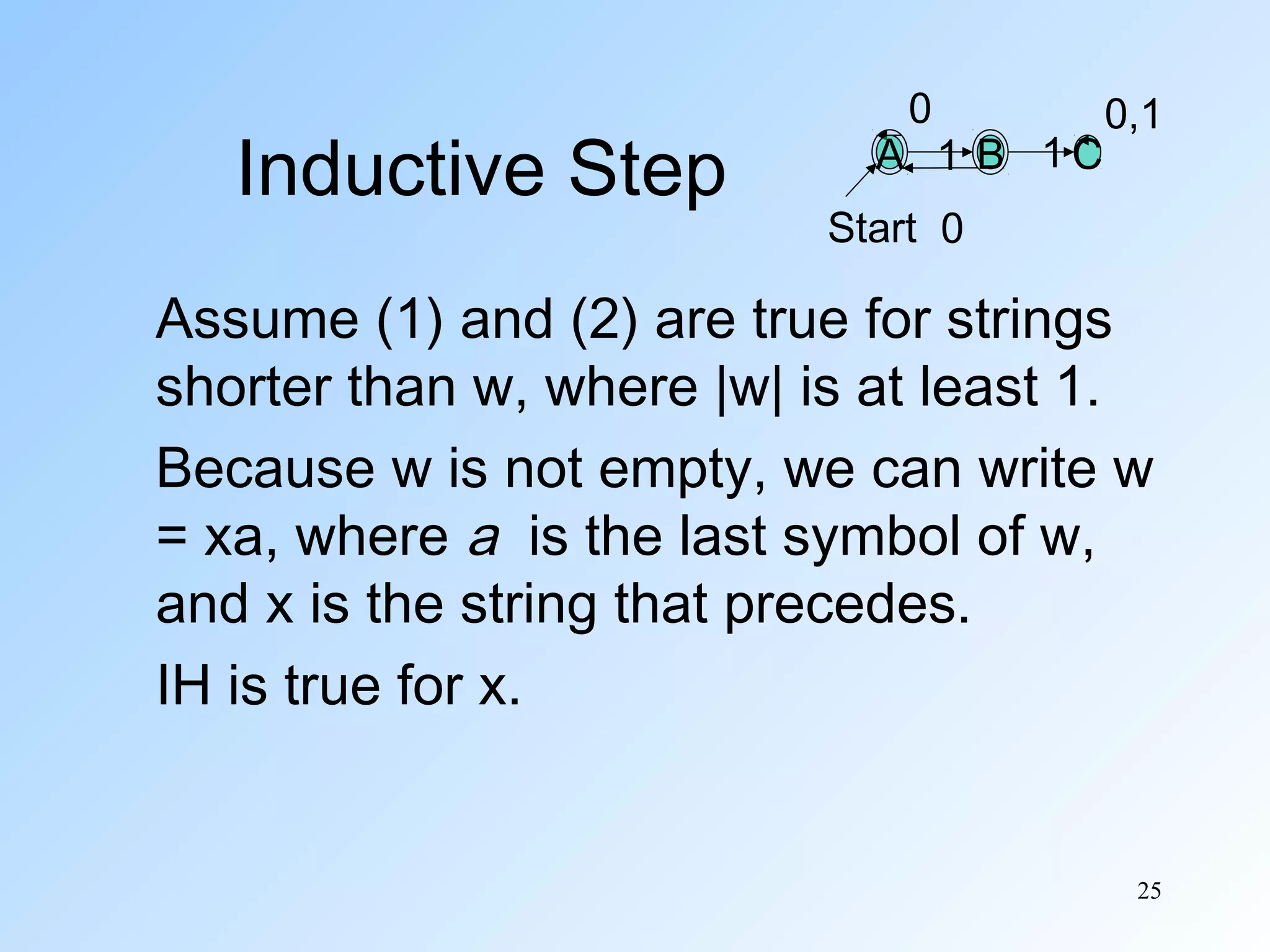
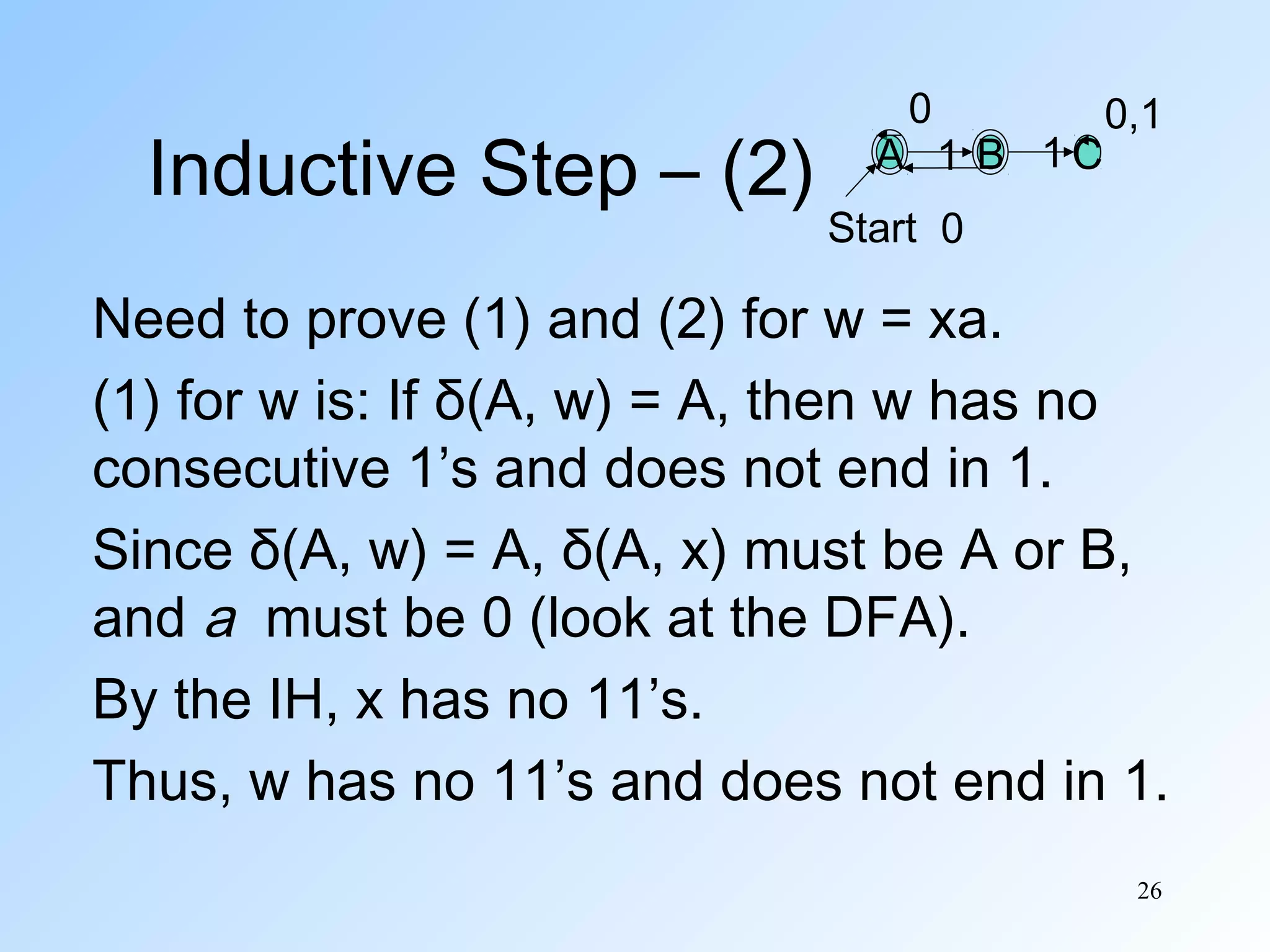
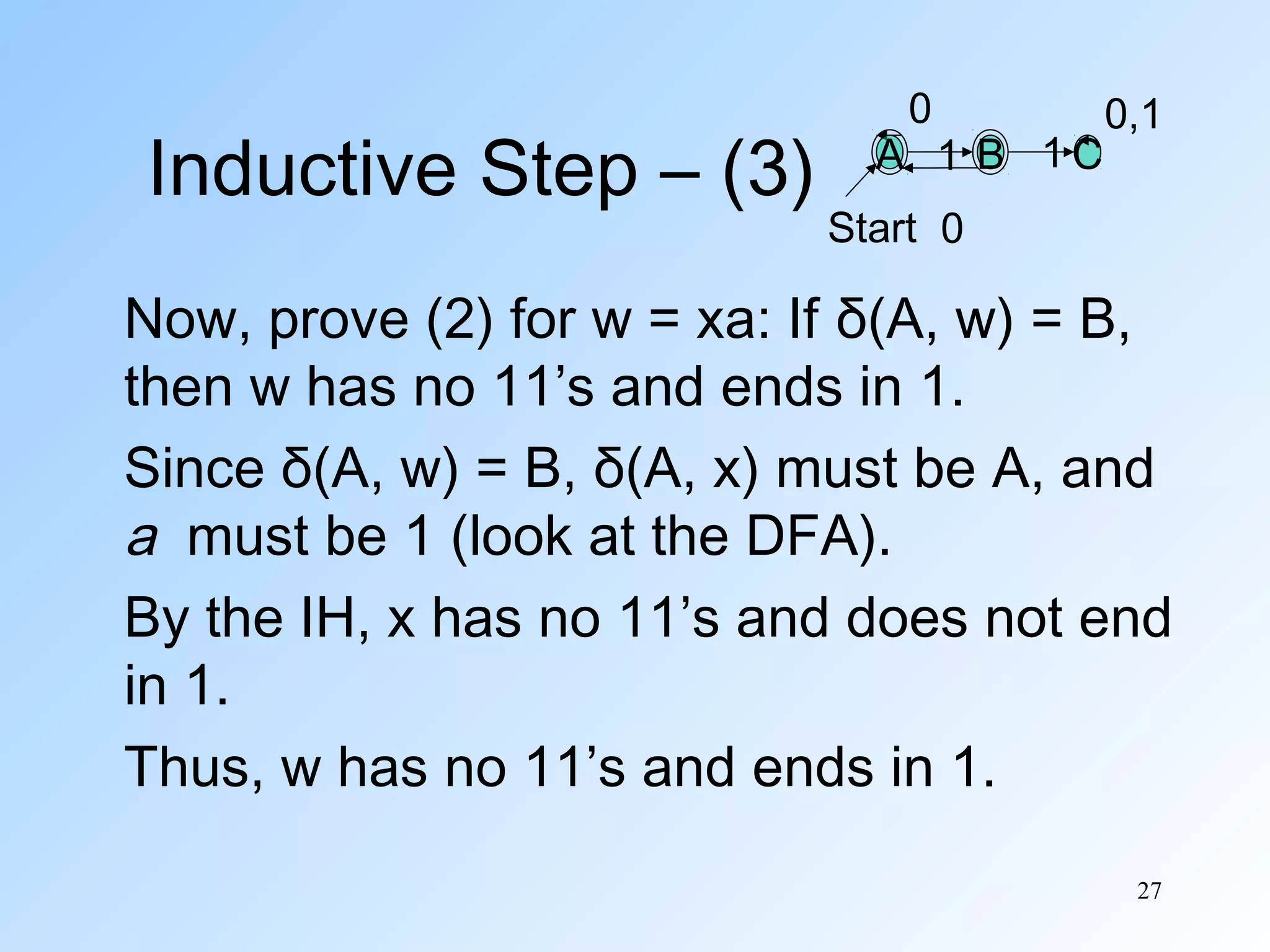
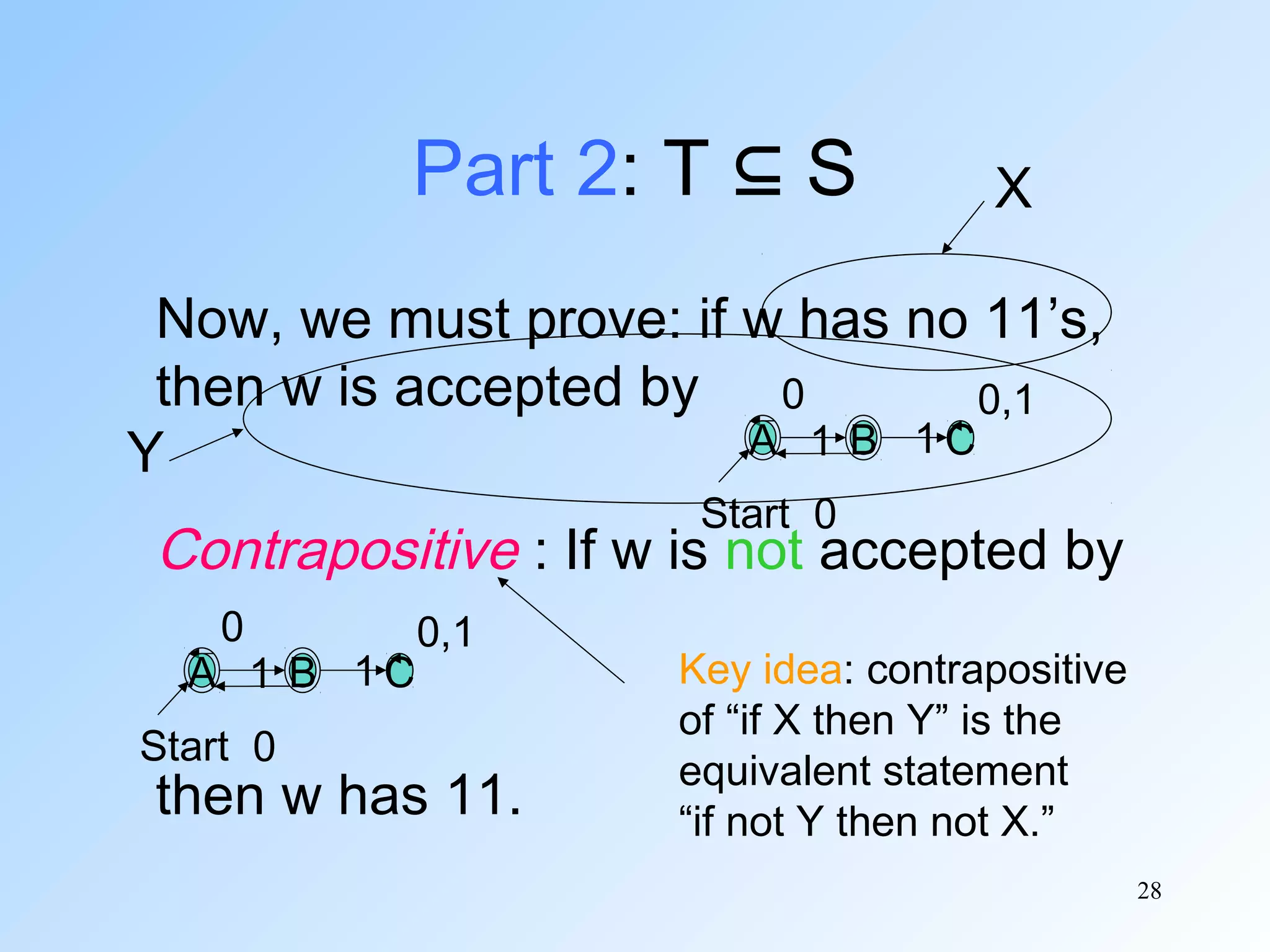
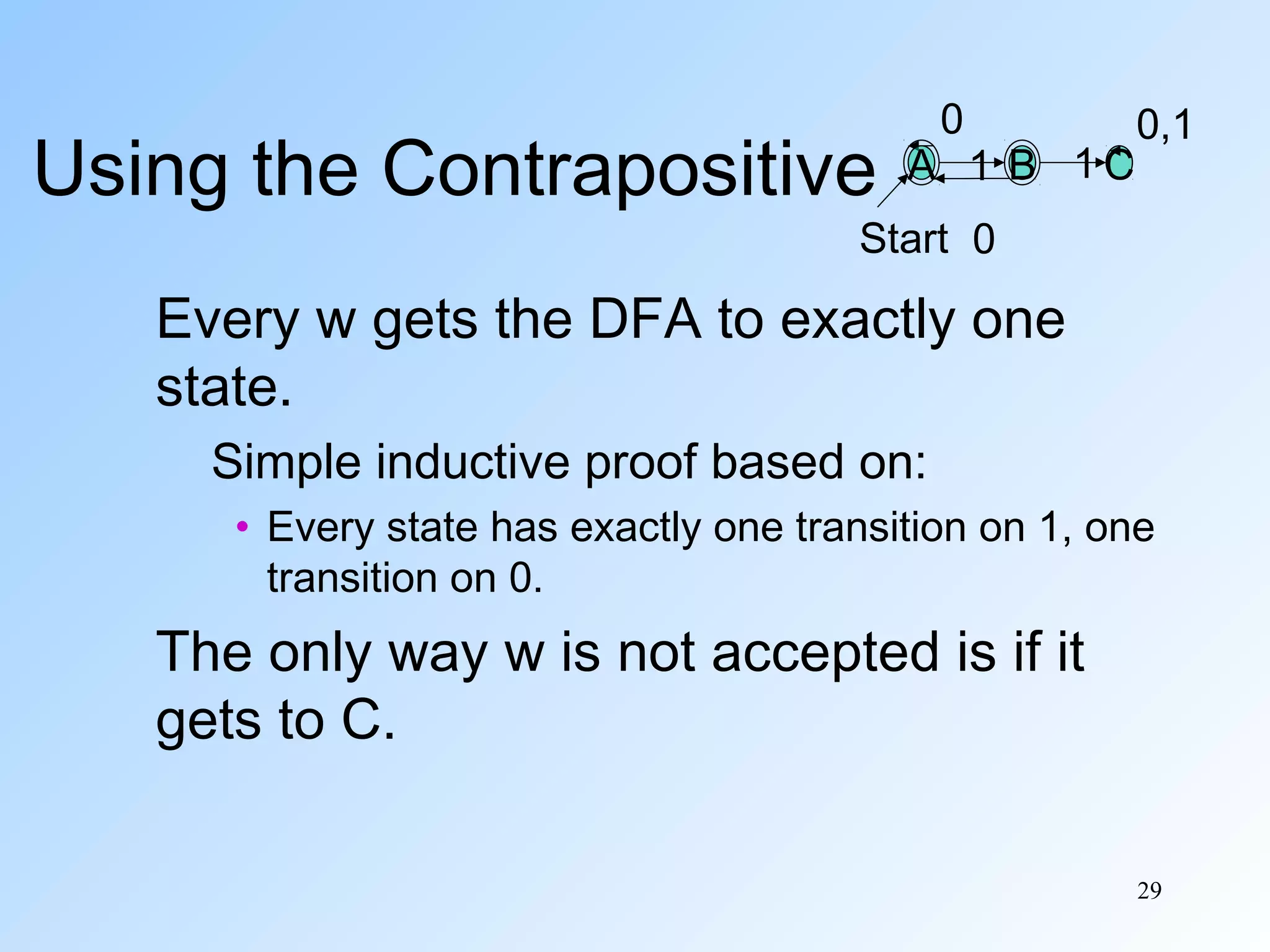
![Using the Contrapositive
– (2)
0
A 1 B 1C
0,1
Start 0
The only way to get to C [formally:
δ(A,w) = C] is if w = x1y, x gets to B,
and y is the tail of w that follows what
gets to C for the first time.
If δ(A,x) = B then surely x = z1 for some
z.
Thus, w = z11y and has 11.
30](https://image.slidesharecdn.com/dfa-basics-131129020242-phpapp01/75/Dfa-basics-30-2048.jpg)
